Sun-drenched stucco, red-clay tiles and vine-draped arcades give Spanish Colonial Revival architecture its enduring romance. Born from the 1915 Panama–California Exposition yet rooted in Iberian, Moorish and Mexican precedents, the style blends thick masonry with breezy courtyards to tame hot climates while celebrating craftsmanship and color. The twenty ideas below show how to weave those time-tested elements into new construction or sensitive restoration, one distinctive feature at a time.
1. Spanish Colonial Revival Stucco & Red-Tile Roof Facade
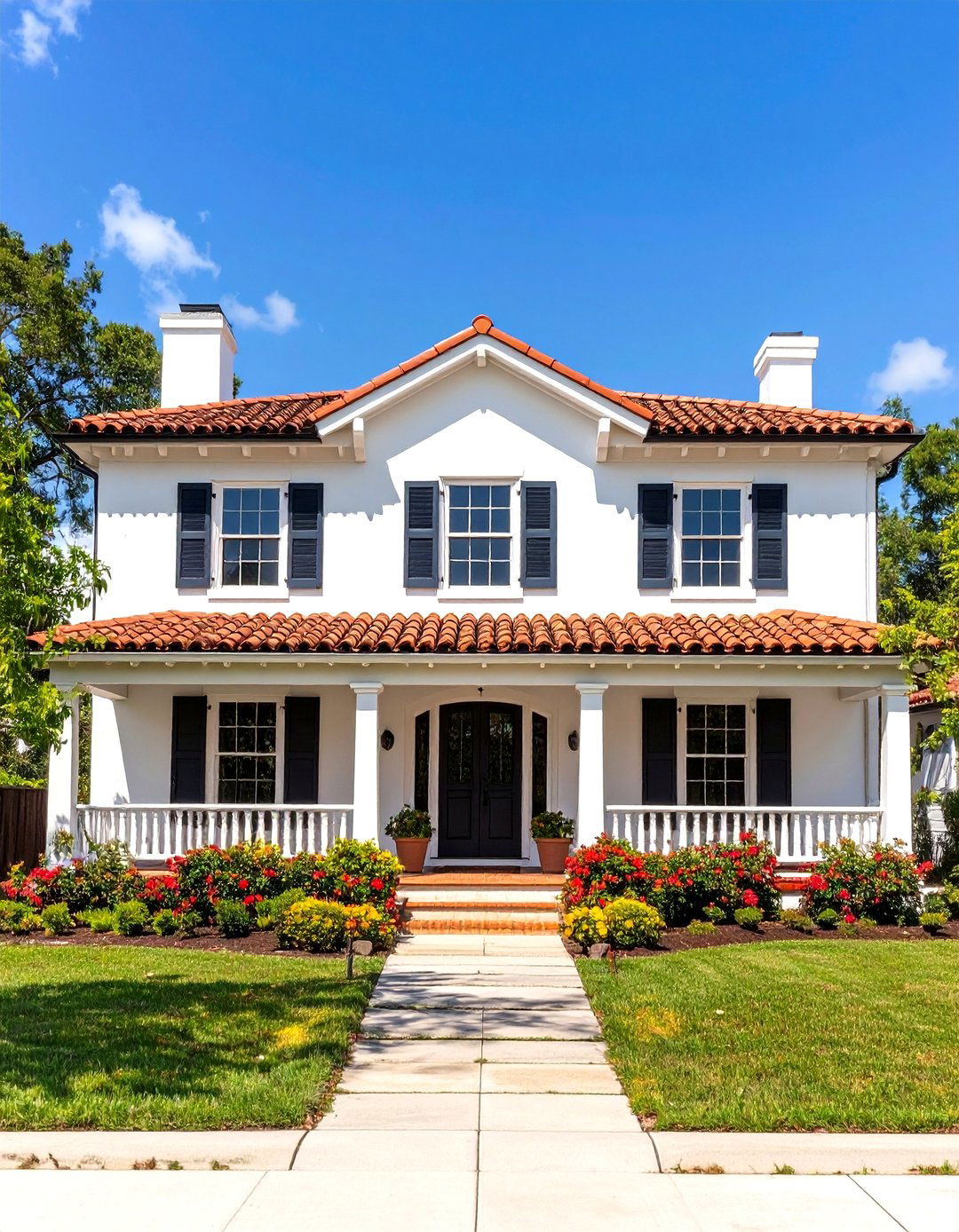
A timeless starting point pairs white or buff stucco walls with low-pitched, barrel-clay tiles that shed heat and glance off harsh sun. Realtor surveys confirm that terra-cotta roofing and textured plaster are the two signatures buyers instantly link with the style, boosting curb appeal and resale value. The National Park Service adds that red tiles also appeared on Mission Revival work, uniting the early-20th-century Southwestern palette.
2. Spanish Colonial Revival Arched Arcaded Walkway
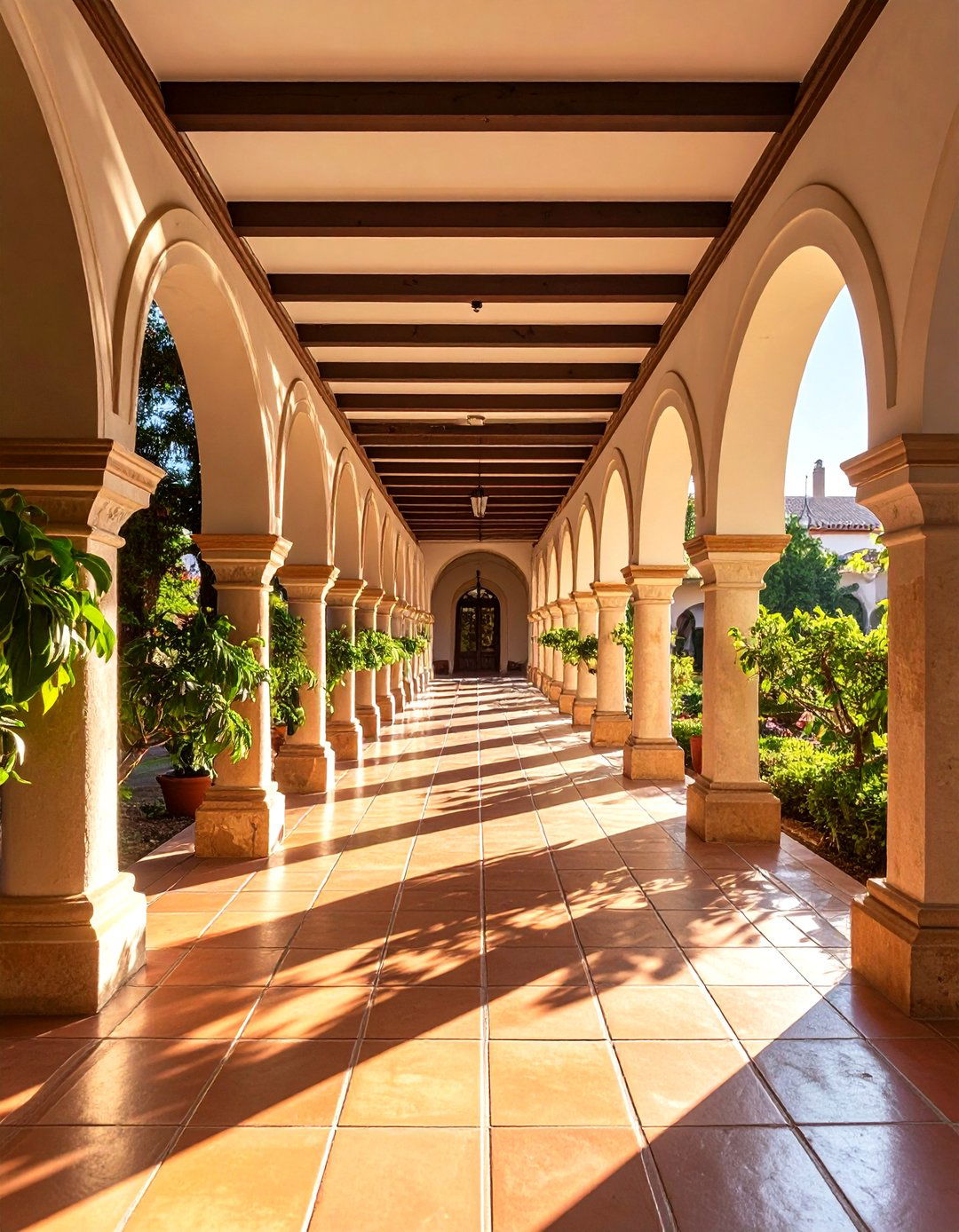
For shaded circulation, run a rhythmic arcade along the courtyard edge: repeated semicircular arches on square piers cool breezes and cast romantic shadow bands. The NPS notes that historic missions wrapped their patios with arcaded corridors that doubled as open-air workrooms and social space. Place terracotta pavers below and whitewash the soffits above to bounce light back into adjacent rooms.
3. Spanish Colonial Revival Central Courtyard Fountain
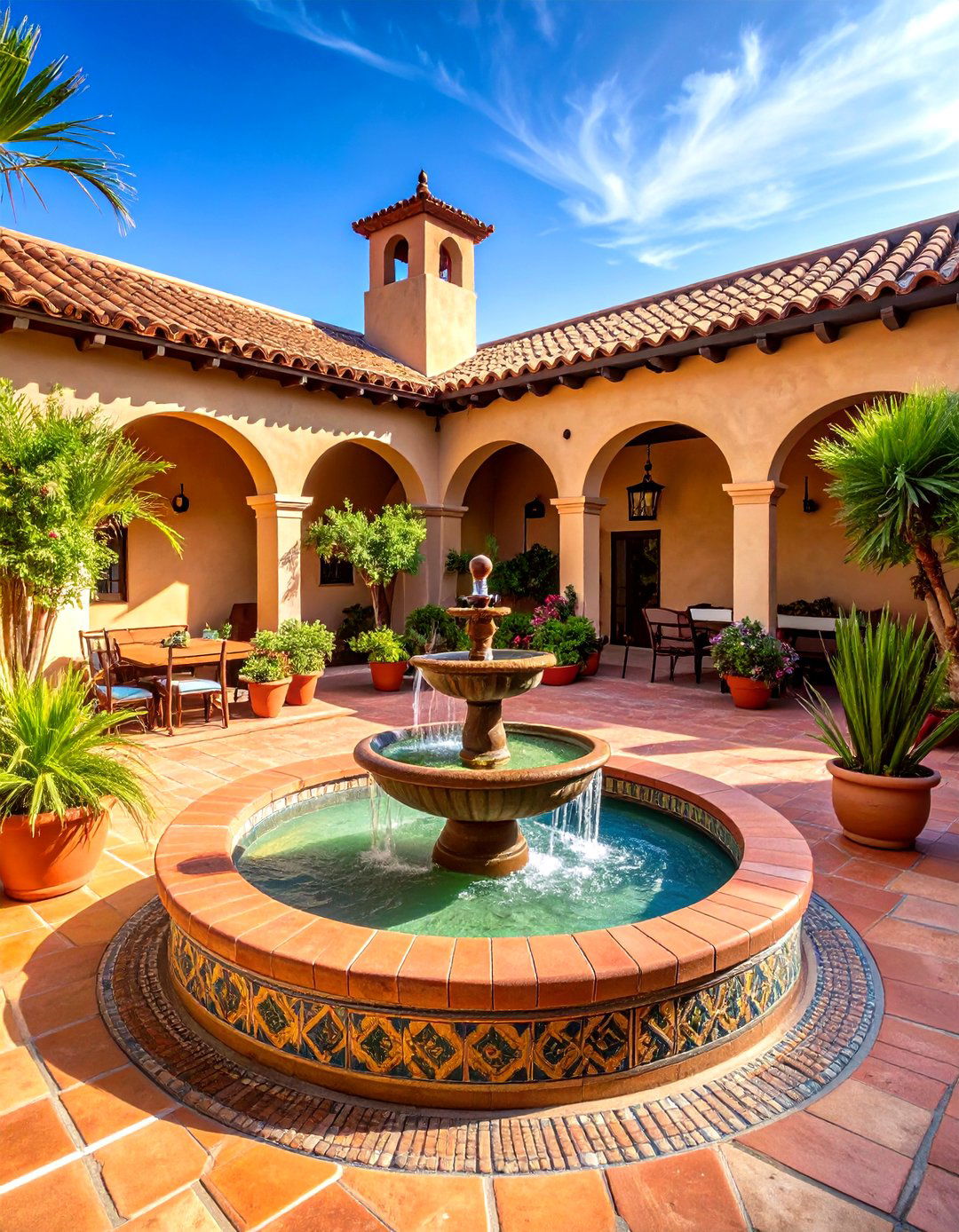
Nothing anchors an interior patio like a bubbling cantera-stone fountain trimmed with hand-painted tile. Houzz galleries show Mediterranean-style backyards where the water feature becomes the focal point for outdoor dining and prayer plants. Designers praise courtyards for extending living space and enhancing cross-ventilation, long-valued hallmarks of Spanish-style homes.
4. Spanish Colonial Revival Wrought-Iron Balcony
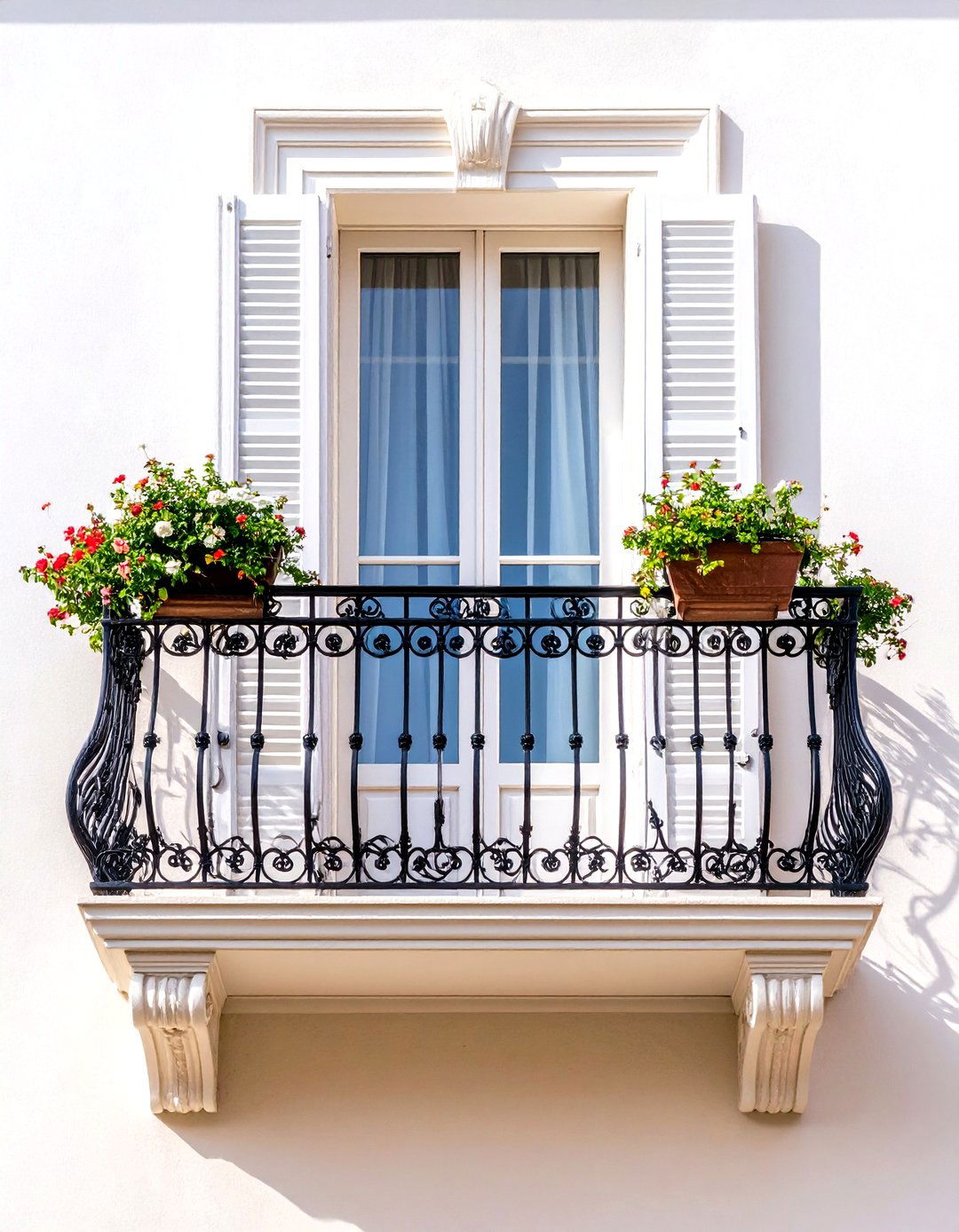
Slim forged-iron spindles, classic “Spanish scrolls” and a dark matte finish transform even modest French doors into Juliet-worthy perches. Artisanal Mexican fabricators still hand-forge simple or elaborate rails sold as “Spanish balconies.” Houzz lists ornamental ironwork among the nine essential Revival details, highlighting railings that complement clay roofs and arched openings.
5. Spanish Colonial Revival Exposed Viga Ceiling Beams
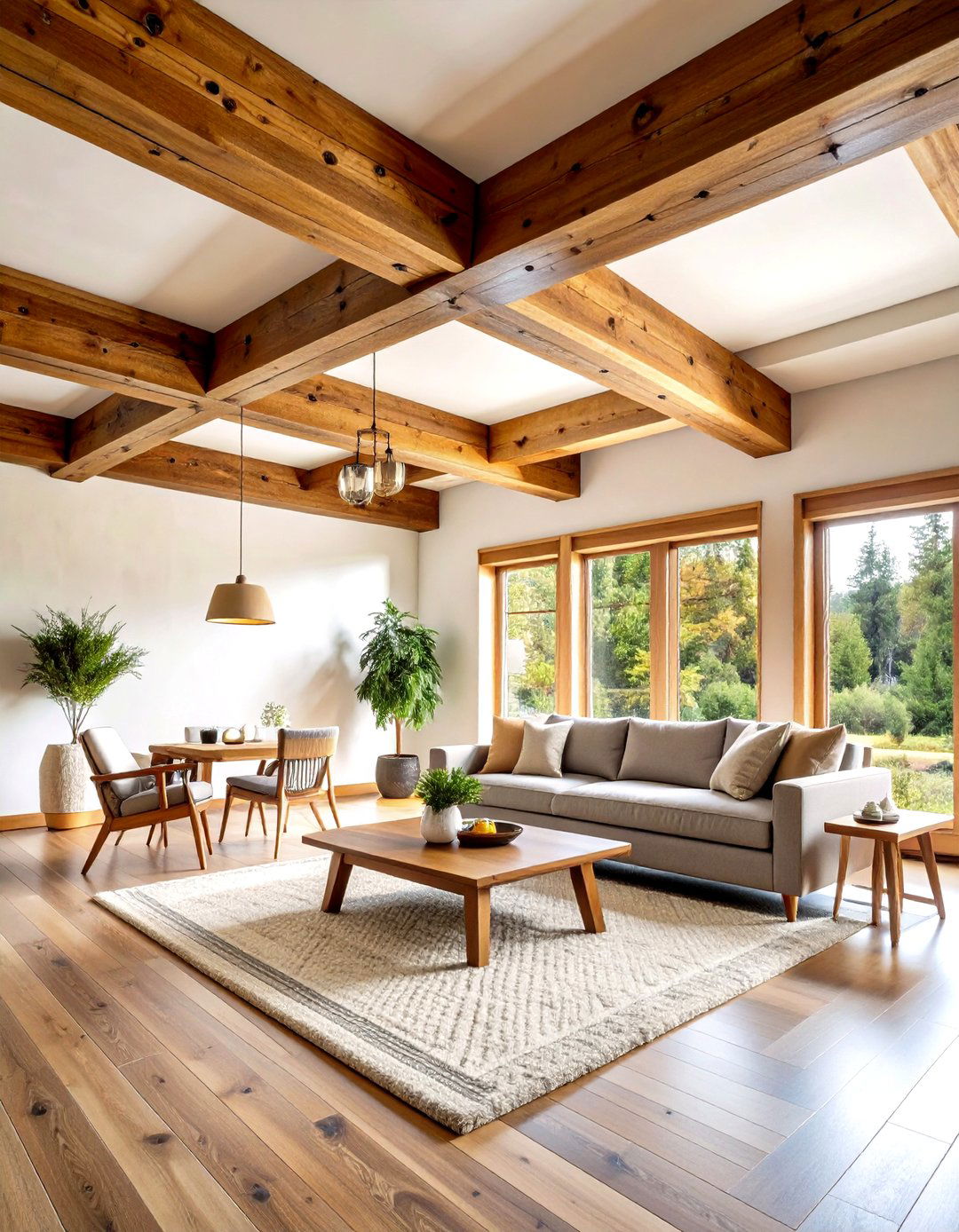
Inside, leave peeled-log vigas visible to lend rustic warmth and structural honesty. Architectural historians identify these ponderosa-pine beams, inherited from Pueblo and early Spanish building traditions, as a defining characteristic widely copied in 1920s Revival homes. Dark-stain or whitewashed finishes both read authentic against smooth plaster walls.
6. Spanish Colonial Revival Carved Wooden Entry Door
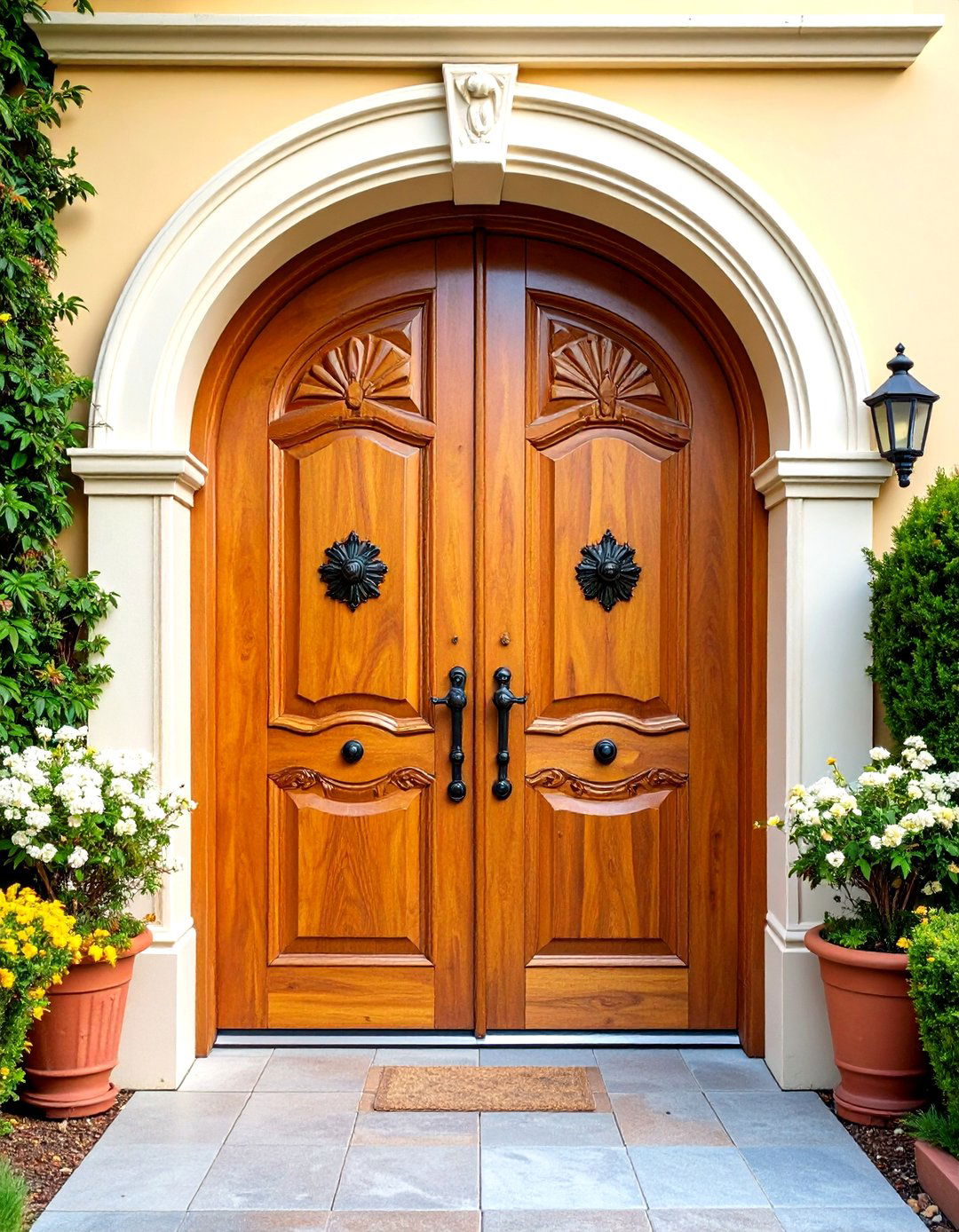
Deeply carved cedar or mesquite doors—often salvaged from haciendas—announce craftsmanship before visitors step inside. Antique-dealer inventories show paneled, hand-tooled Spanish doors dating from the 18th to 20th centuries, prized for rope molding, star rosettes and wrought-iron clavos. Frame the portal with a stucco arch and lanterns for maximum drama.
7. Spanish Colonial Revival Talavera-Tiled Staircase
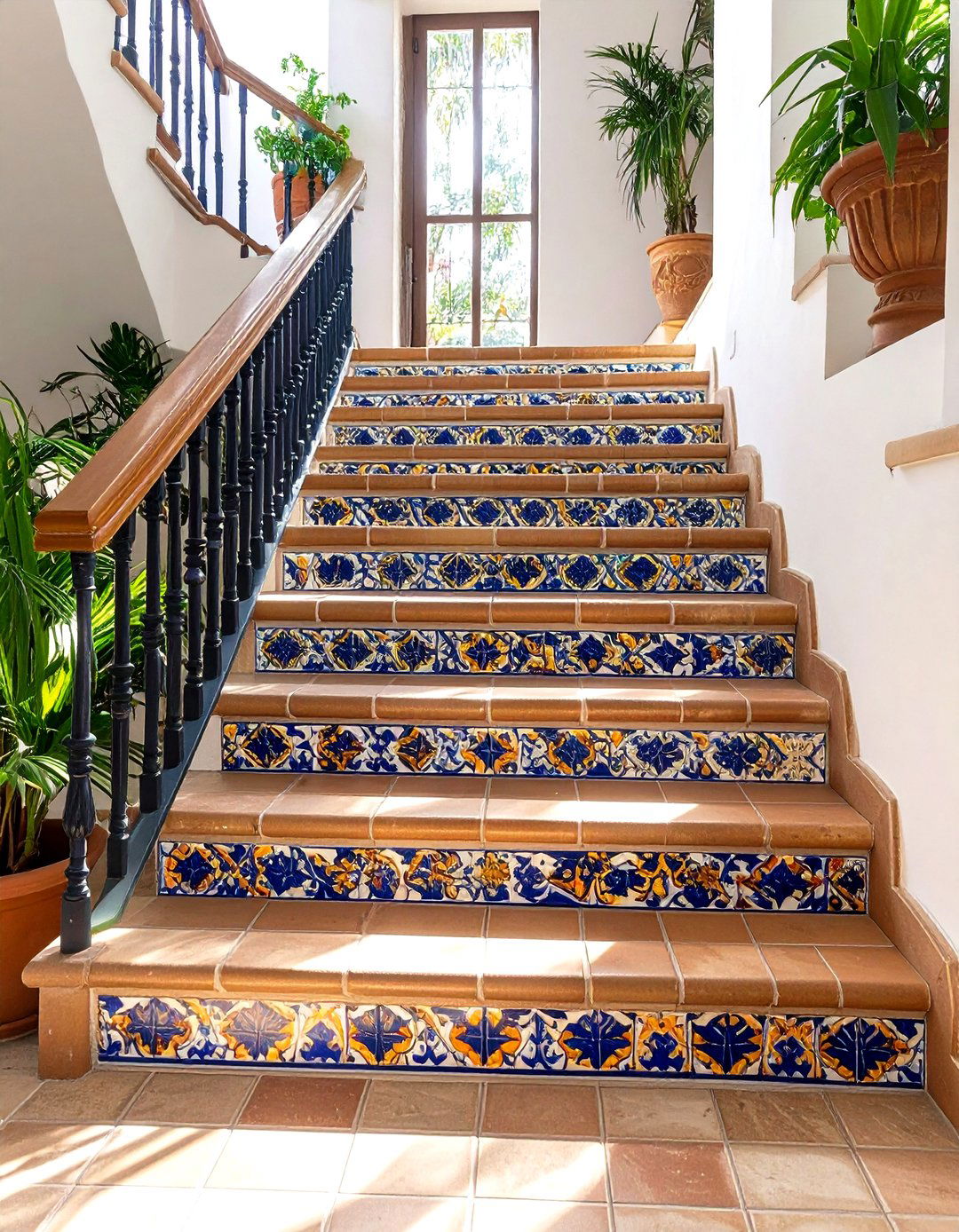
Let every ascent become a fiesta of color by setting hand-painted Talavera risers against Saltillo treads. Mexican-tile suppliers offer hundreds of patterns inspired by colonial haciendas, perfect for indoor and outdoor flights. Design blogs praise the cobalt blues, sun-burnt ochres and Moorish geometrics for tying interior palettes to garden pottery.
8. Spanish Colonial Revival Ornamental Iron Lantern Sconces
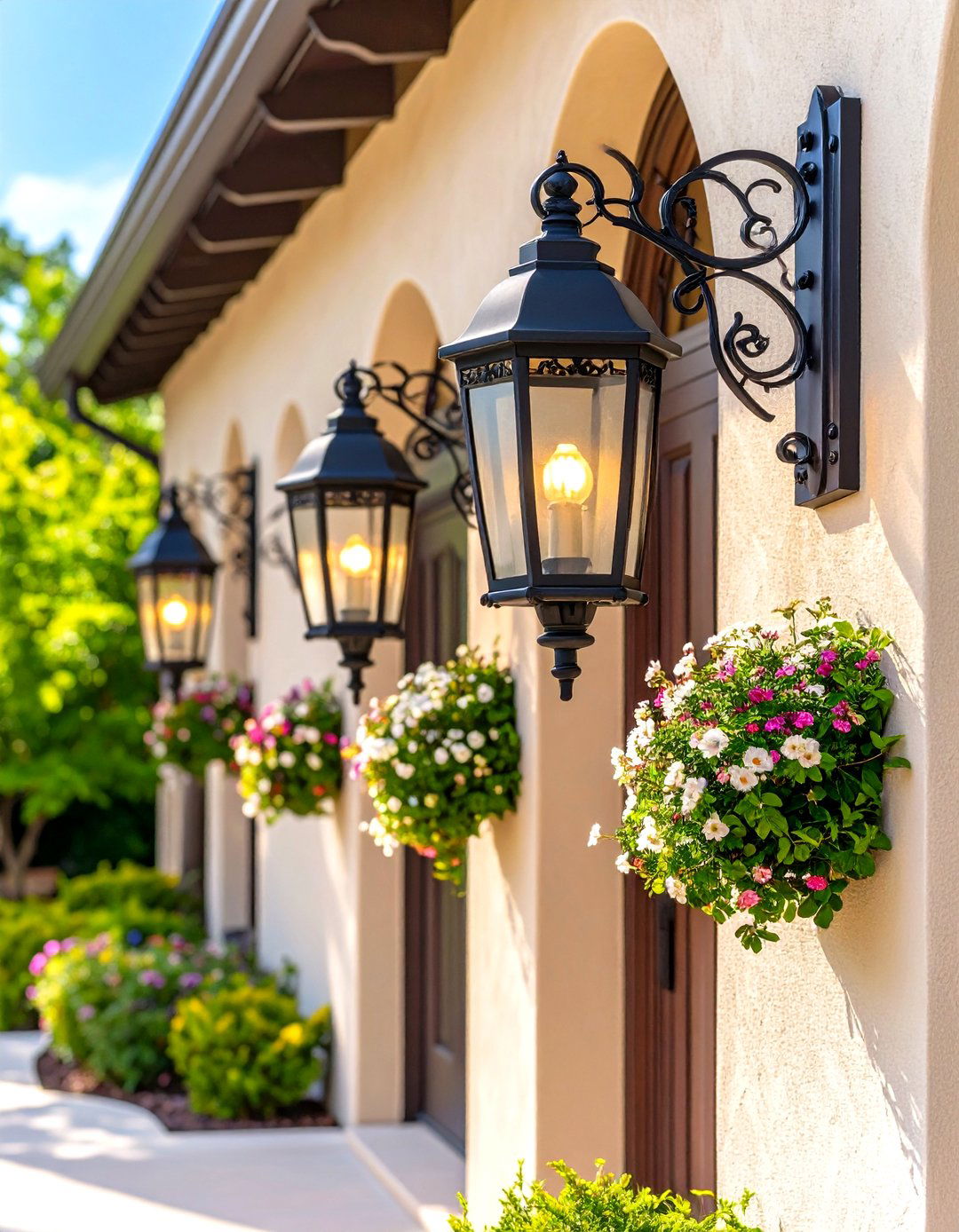
Nothing flatters stucco at dusk like the glow of forged-iron wall lanterns flanking an archway. Houzz describes lanterns, grilles and gates as quintessential iron accents that temper the style’s smooth plaster with shadowy texture. Old-World lighting guides tout oil-rubbed bronze or blackened finishes for authenticity and longevity.
9. Spanish Colonial Revival Triple-Arched Main Entrance
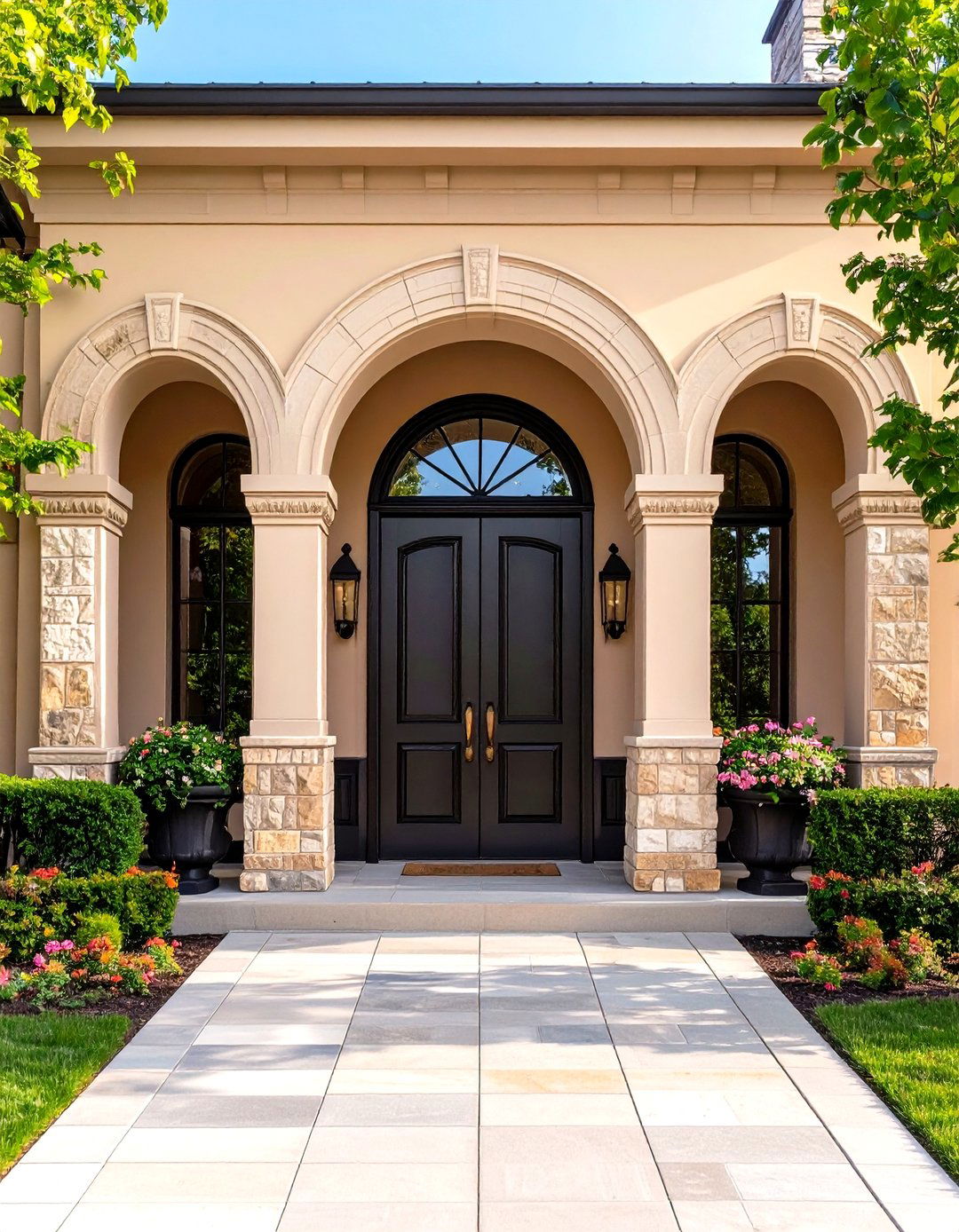
A broad center arch flanked by two narrower openings recalls Andalusian cloisters and balances asymmetrical massing. Historic Register files for 1920s Revival residences list arched windows, loggias and terraces—often trimmed with wrought-iron grates—as hallmarks of the genre. Emphasize the central arch with patterned tile or carved stone surrounds for added depth.
10. Spanish Colonial Revival Decorative Parapet with Clay Finials
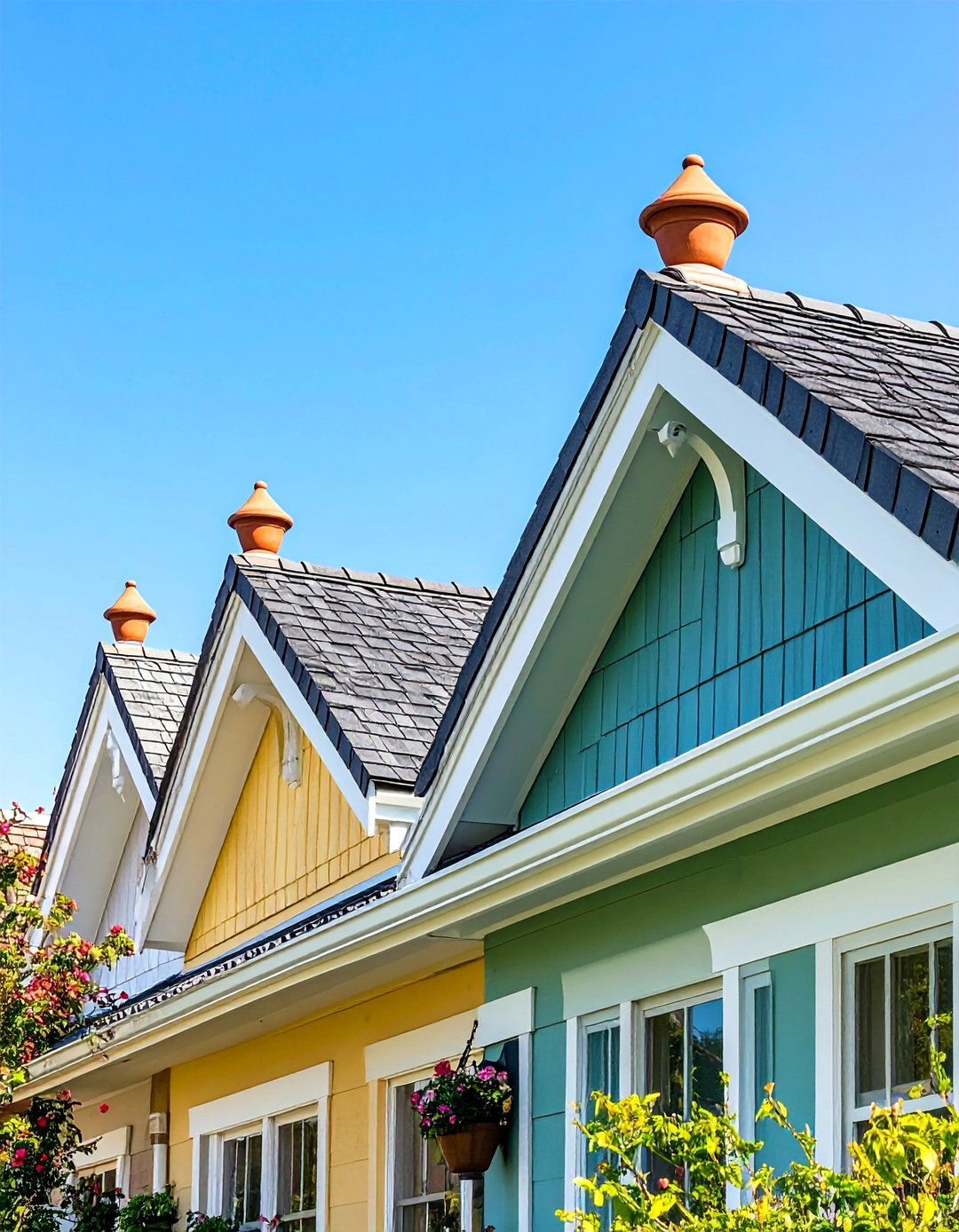
Low stucco parapets crowned by rounded mission-tile caps or terracotta finials silhouette beautifully against bright skies. Mission-Revival research notes that early West Coast architects used overhanging tile-capped gables and parapets to echo California’s restored missions while hiding flat roofs behind graceful lines.
11. Spanish Colonial Revival Bell Tower Campanario
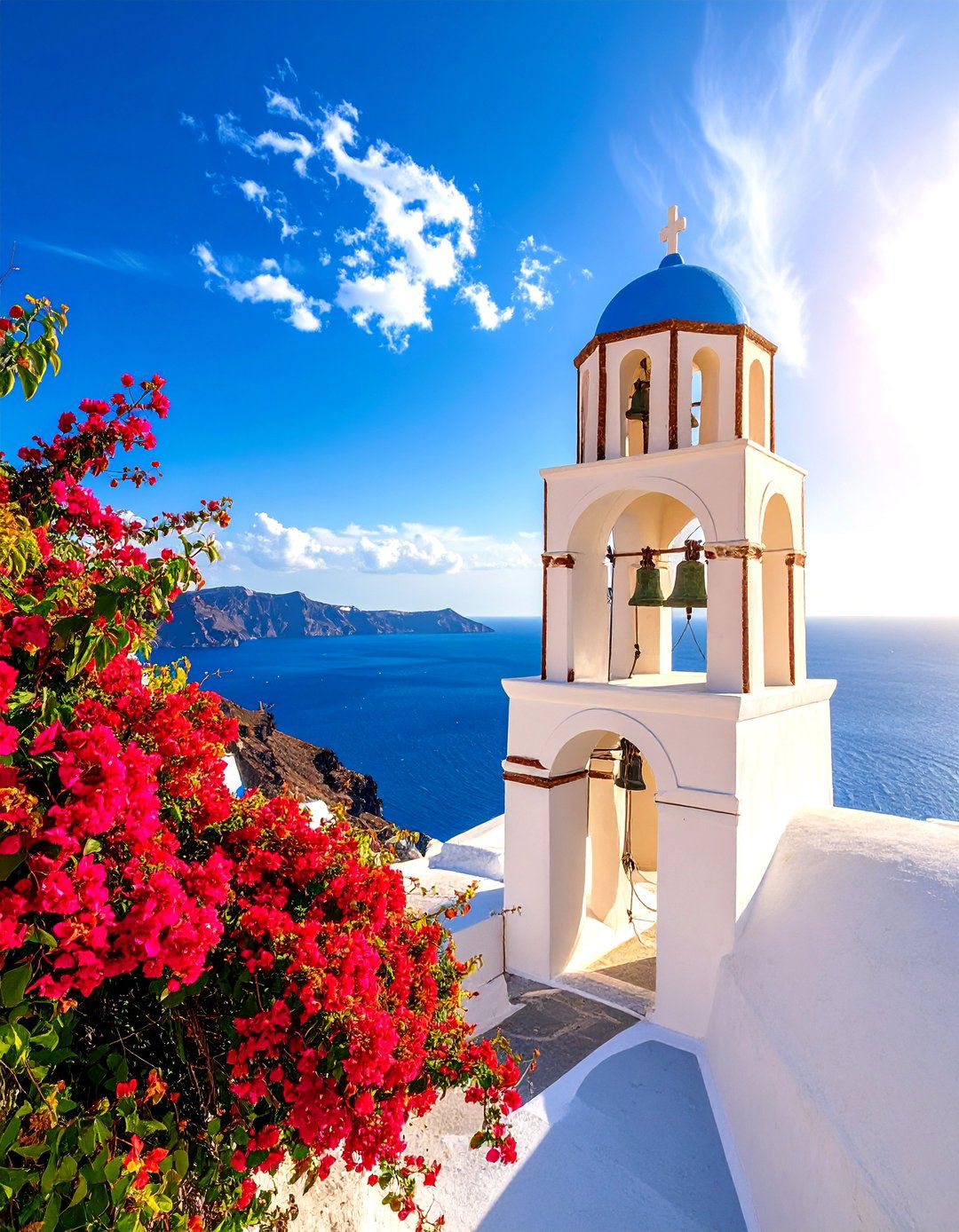
Whether a modest espadaña or a soaring twin-tower façade, bell stages announce spiritual roots and lend vertical punctuation. The National Park Service documents mission churches where multi-arched bell gables became enduring images of Hispanic architecture. Even a small detached belfry with clay-tile shed roof instantly signals authenticity.
12. Spanish Colonial Revival Shaded Loggia Living Space
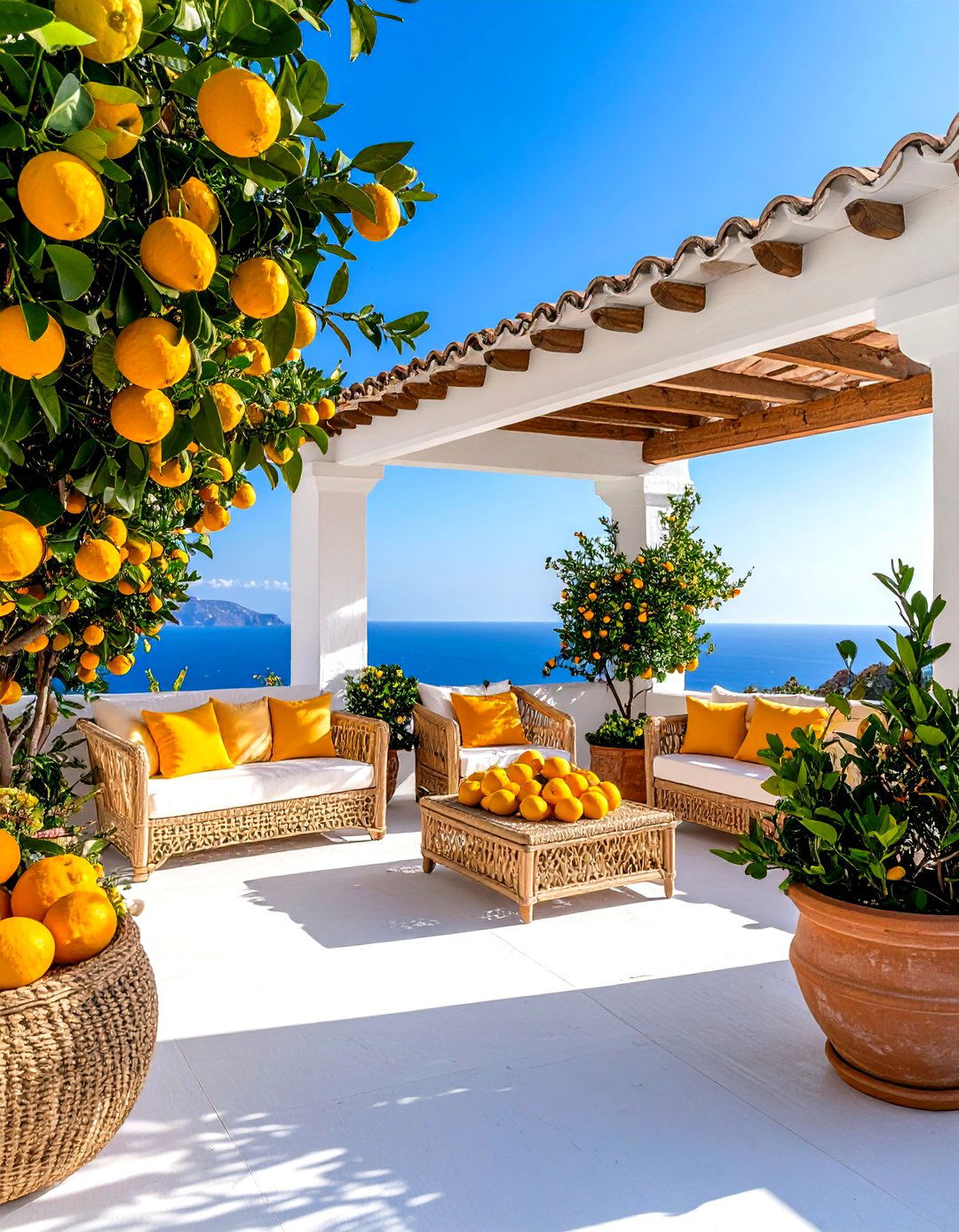
Extend interiors outdoors beneath a tiled shed roof supported by chunky stucco columns. Historic Florida Revival homes feature loggias and terraces that blur climate-friendly indoor-outdoor boundaries while showcasing arched openings and ironwork. Furnish with rattan, serape throws and potted citrus for resort-style lounging.
13. Spanish Colonial Revival Whitewashed Chimenea Fireplace
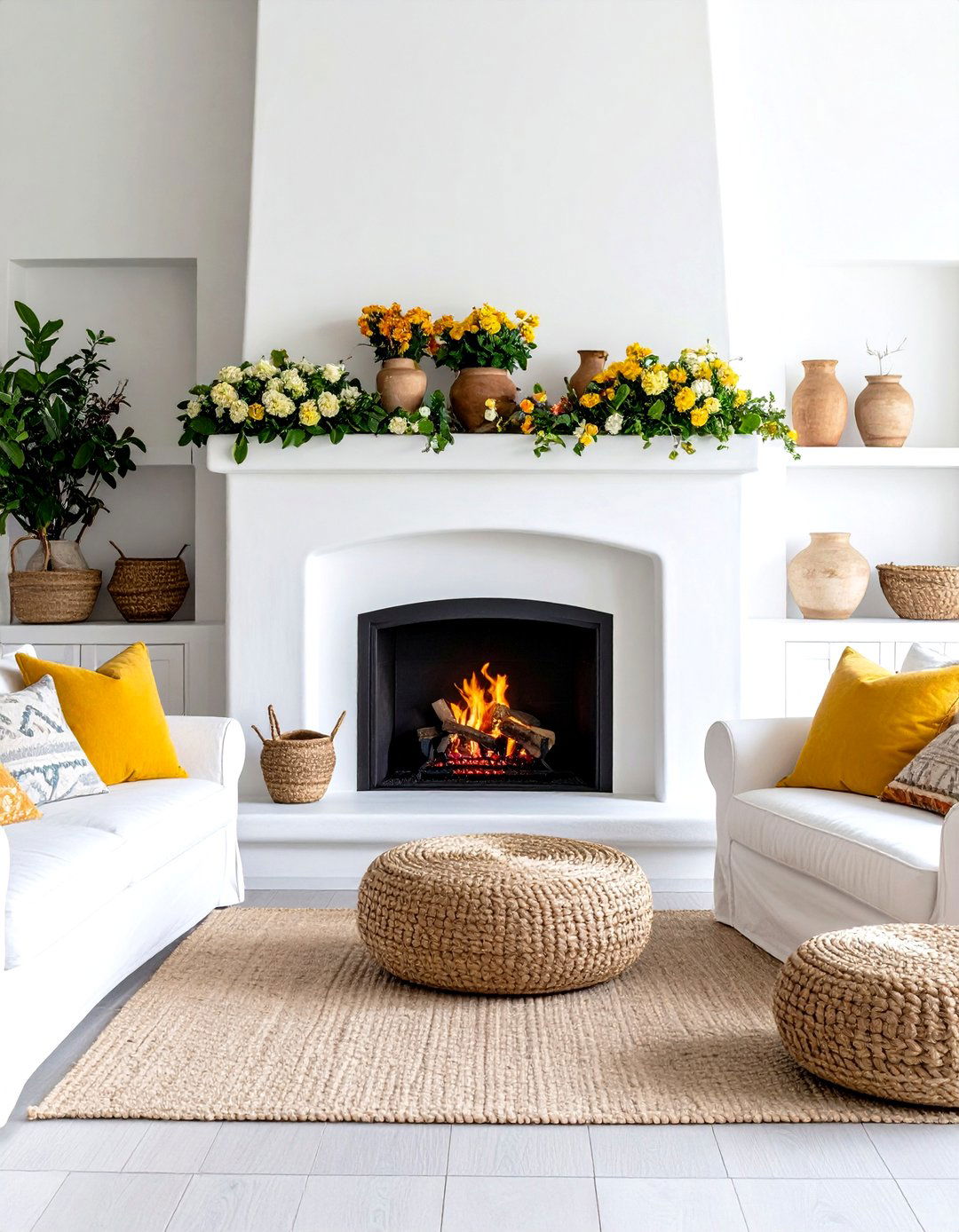
Borrow Southwestern flair with a rounded adobe-style hearth—often called a kiva—that anchors living rooms on cool evenings. Design boards catalog dozens of kiva fireplaces in Spanish Revival homes, prized for organic curves and nichos that display pottery. Keep finishes matte and let a cedar-log blaze scent the air.
14. Spanish Colonial Revival Colorful Mosaic Moorish Fountain
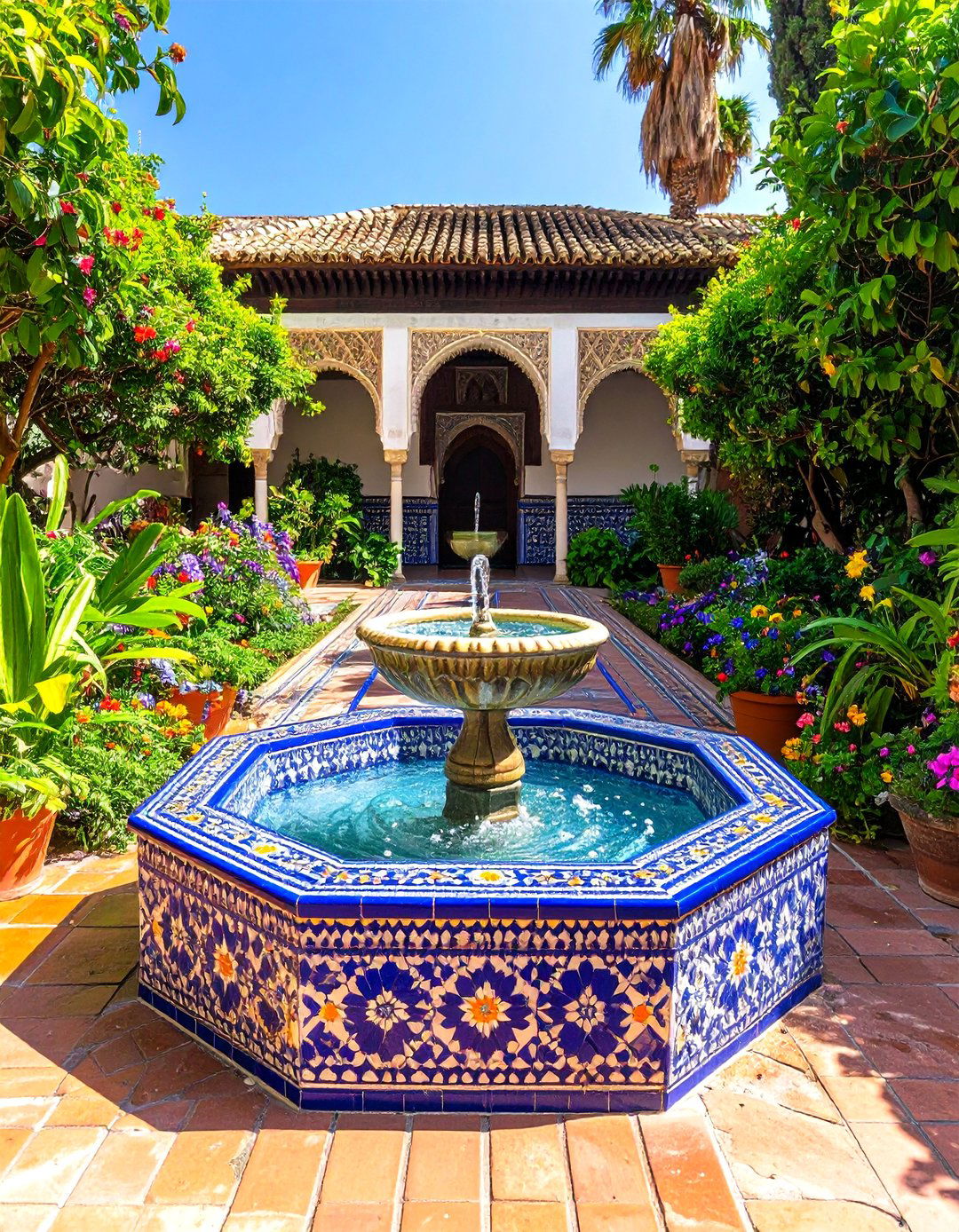
Surprisingly, many Revival courtyards combine Spanish form with Islamic pattern: star-shaped basins clad in blue-and-white mosaics. Mediterranean patio collections on Houzz highlight Tuscan and Spanish fountains that add cooling sound and visual rhythm. Integrate low-flow pumps to meet modern sustainability codes without losing Old-World ambiance.
15. Spanish Colonial Revival Second-Story Juliet Balcony
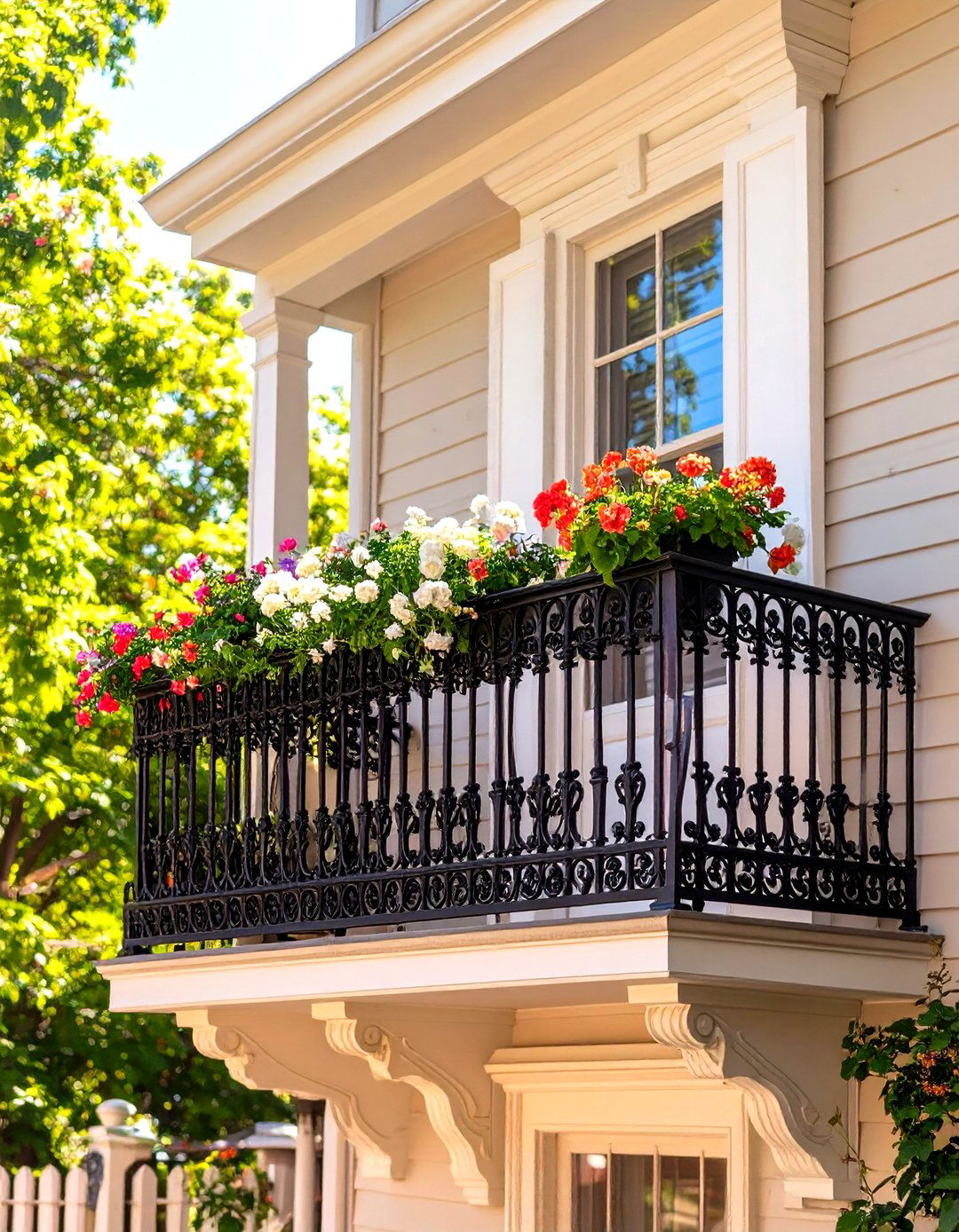
A slim wrought-iron rail outside a pair of casement doors invites morning coffee and street views. Home guides list Juliet balconies—often only eighteen inches deep—as a charming way to bring light and ventilation to upper bedrooms while preserving façade balance.
16. Spanish Colonial Revival Garden Pergola with Bougainvillea
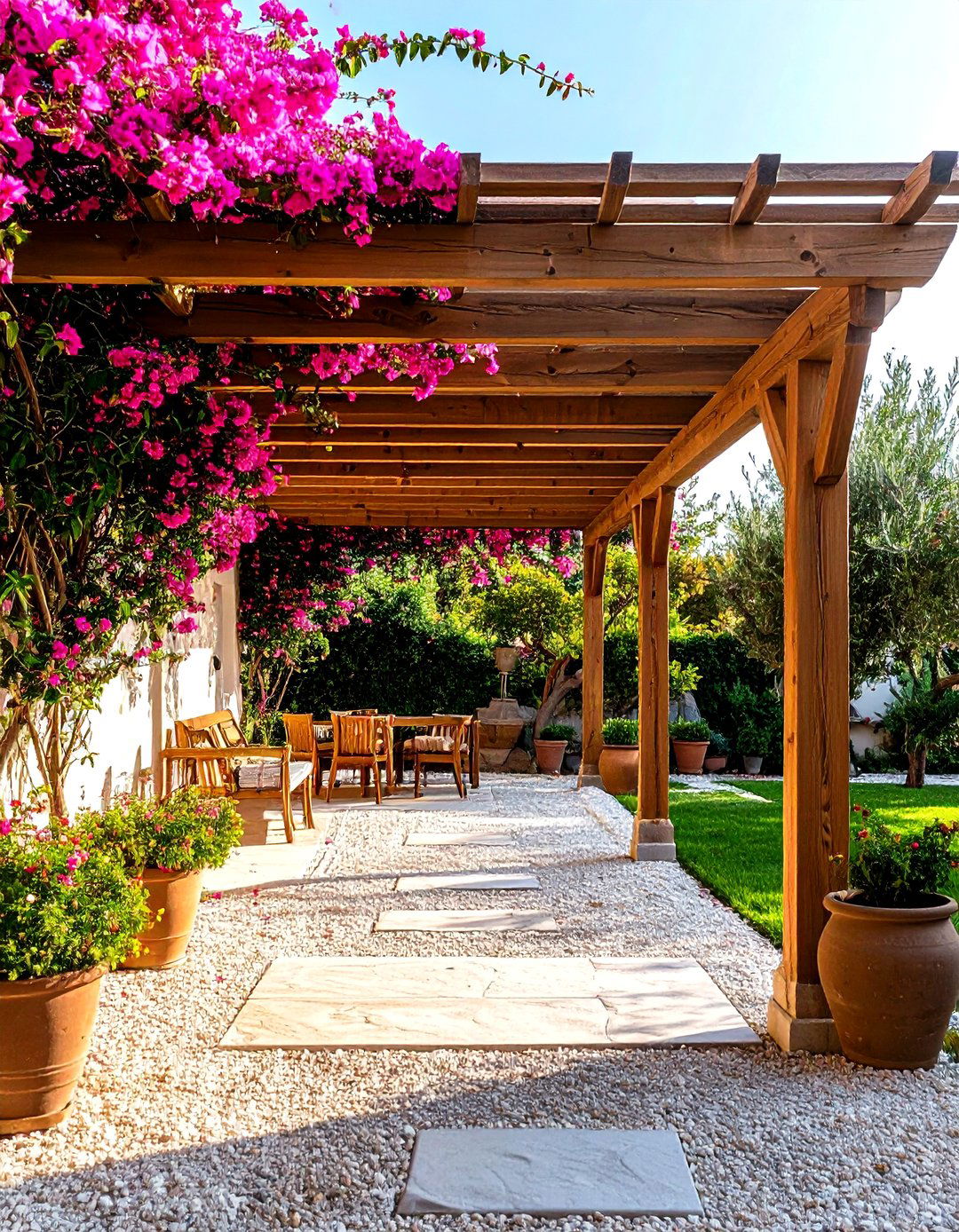
Drape a simple wood or steel pergola in magenta bougainvillea to frame walkways and perfume evening gatherings. Landscape inspiration boards show Spanish houses where vibrant vines soften hard stucco edges and echo terracotta hues. Pair with gravel paths and olive tubs for Mediterranean authenticity.
17. Spanish Colonial Revival Barrel-Vaulted Hallway Ceiling
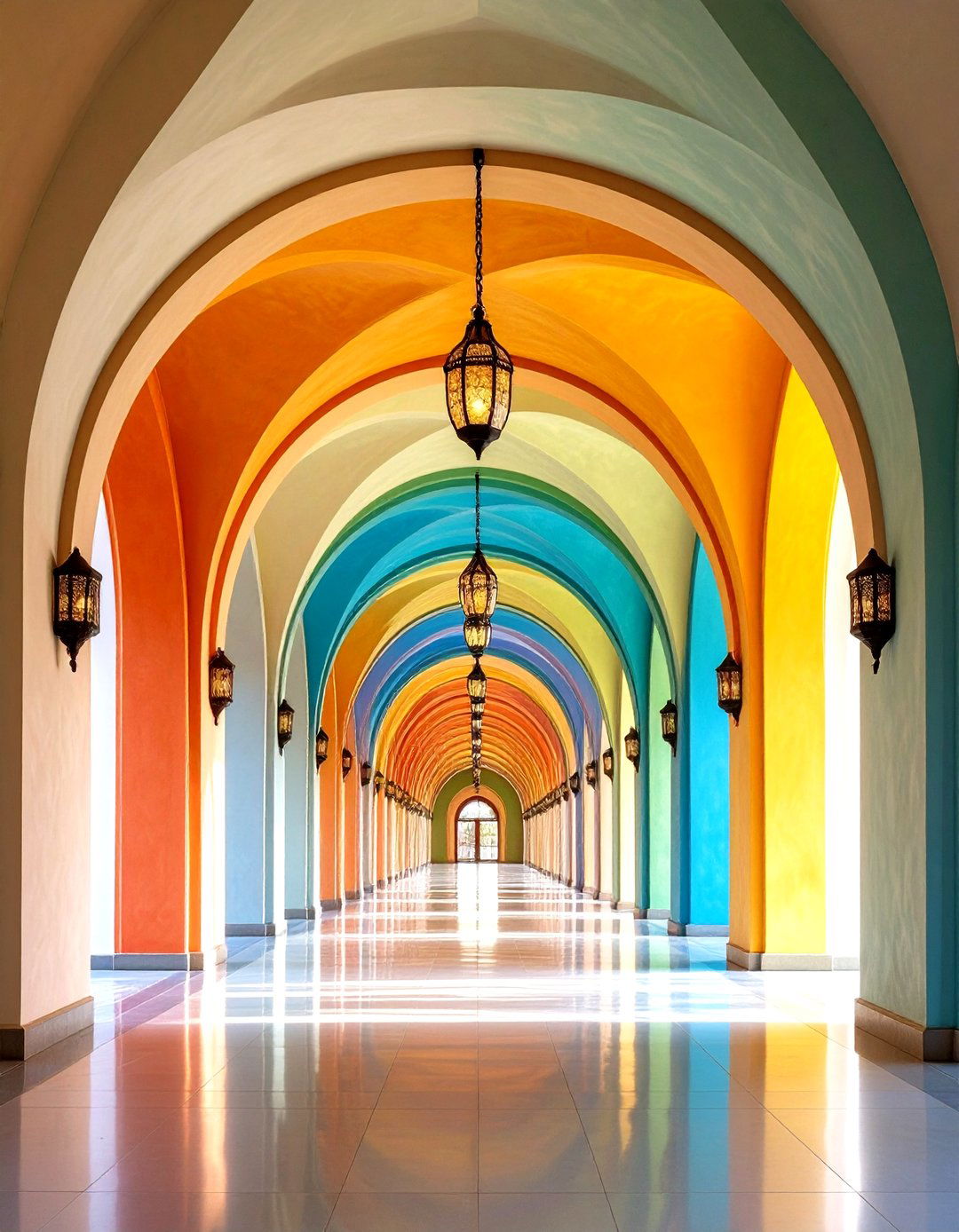
A gentle plaster vault finished with hand-troweled texture turns transitional corridors into architectural events. Santa Barbara designers showcase barrel ceilings accented by Moorish lanterns, marrying Spanish and Andalusian influences in a single gesture. Highlight the curve with subtle uplighting to celebrate depth after dark.
18. Spanish Colonial Revival Patterned Saltillo Tile Terrace
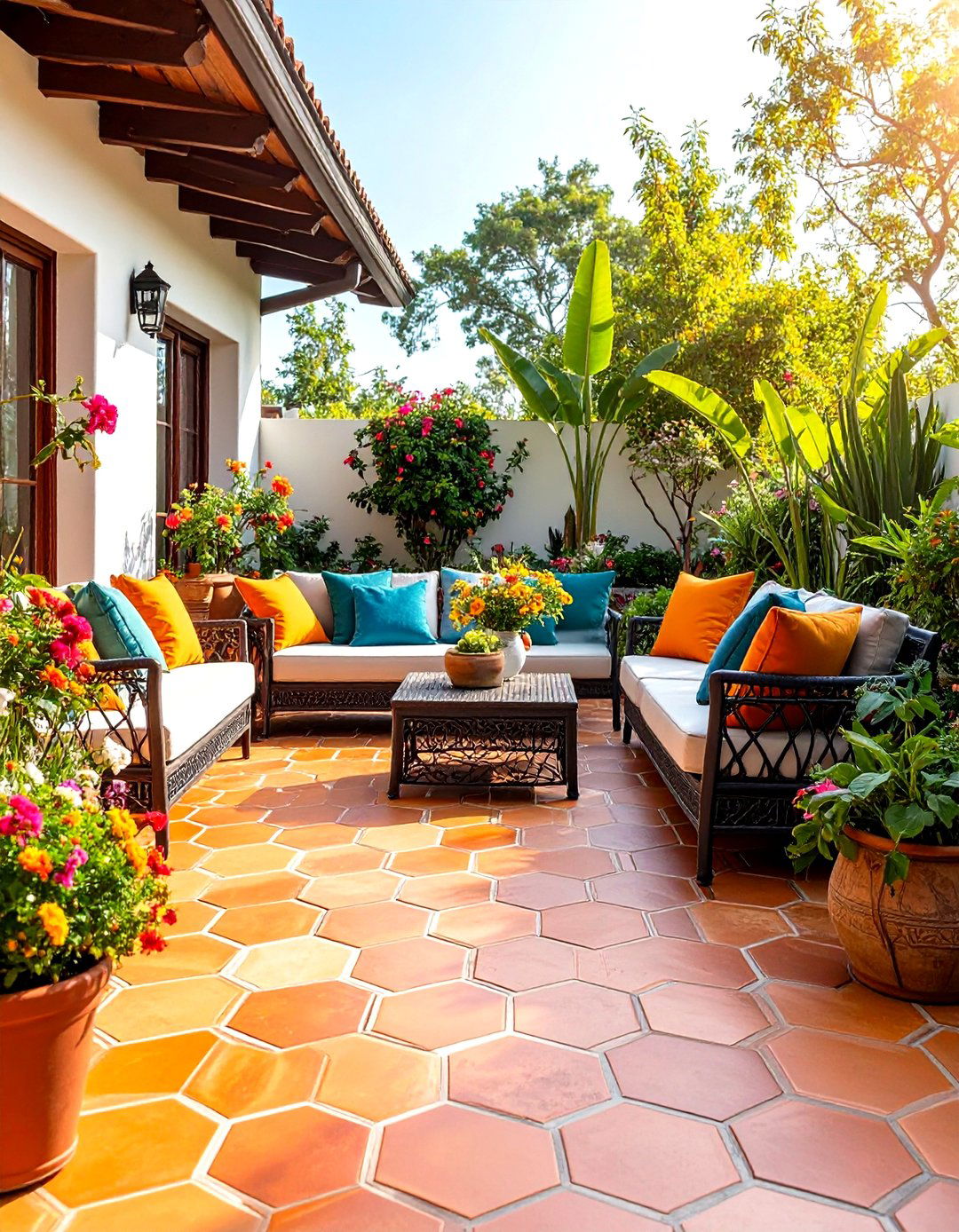
Outdoor rooms gain warmth from earthy hexagon or paver-style Saltillo tiles whose variegated oranges complement stucco walls and dark beams. Houzz kitchen features praise Saltillo for uniting interiors and patios while standing up to heavy foot traffic. Seal tiles with a breathable finish to guard against moisture without losing natural patina.
19. Spanish Colonial Revival Interior Adobe Niches & Nichos
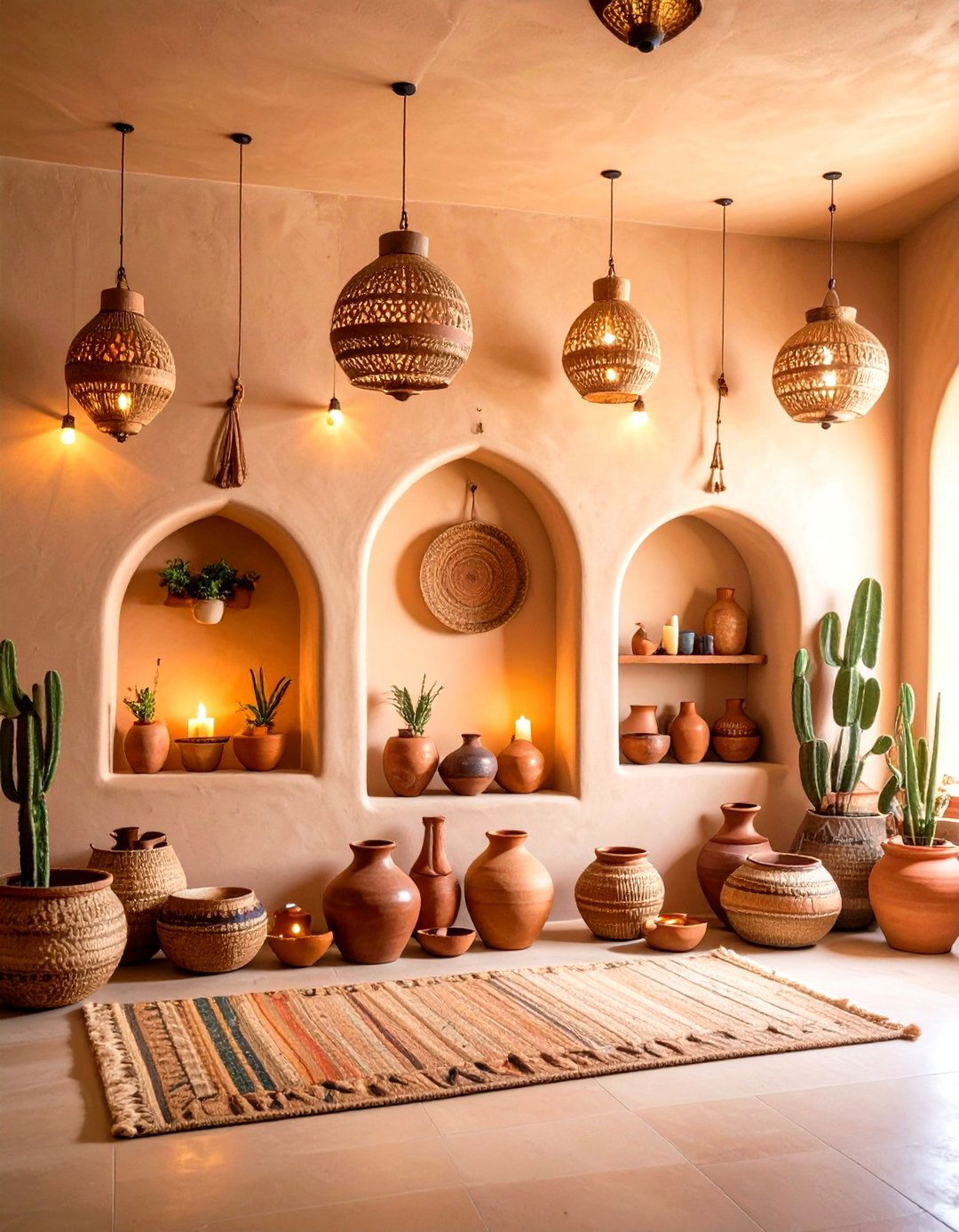
Thick masonry walls invite recessed display alcoves for santos, candlesticks or pottery. Contemporary remodels retain these niches to honor heritage while adding subtle LED uplights. The Spruce notes that sculpted plaster recesses are common in historic Spanish Colonial homes, alongside exposed beams and colorful tiles.
20. Spanish Colonial Revival Ornamental Iron Window Grilles
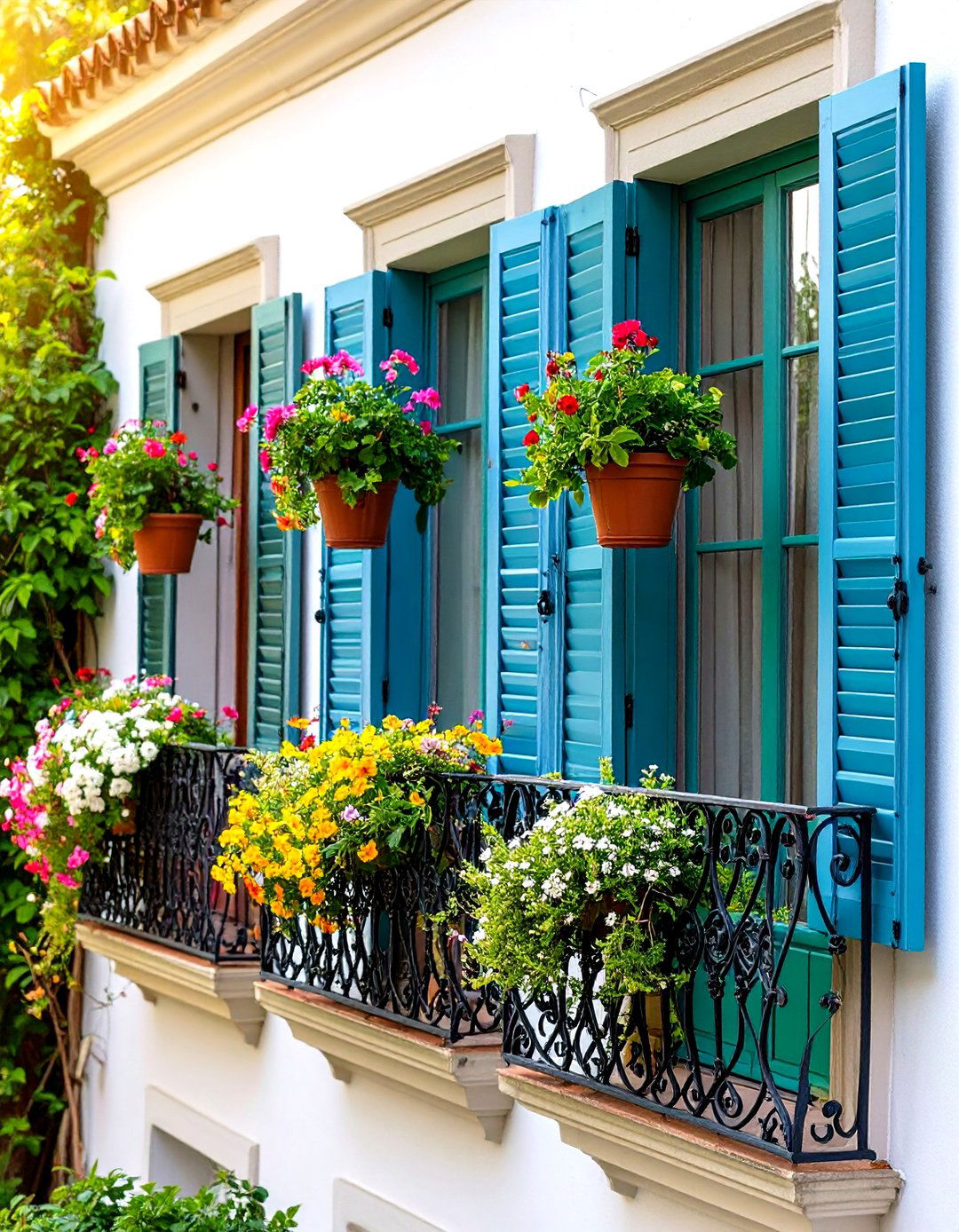
Finally, dress windows with filigreed iron rejas that provide security and filmy shadow play. Houzz highlights finely crafted grilles as one of the nine defining Spanish Revival elements, often coordinated with gates and balcony rails for cohesive detailing.
Conclusion:
All things considered, each feature—from tile-capped parapet to bougainvillea pergola—adds a precise sensory note to the Spanish Colonial Revival symphony. Combine several judiciously, respect regional climate, and your project will sing with sun, shade, color and craft.


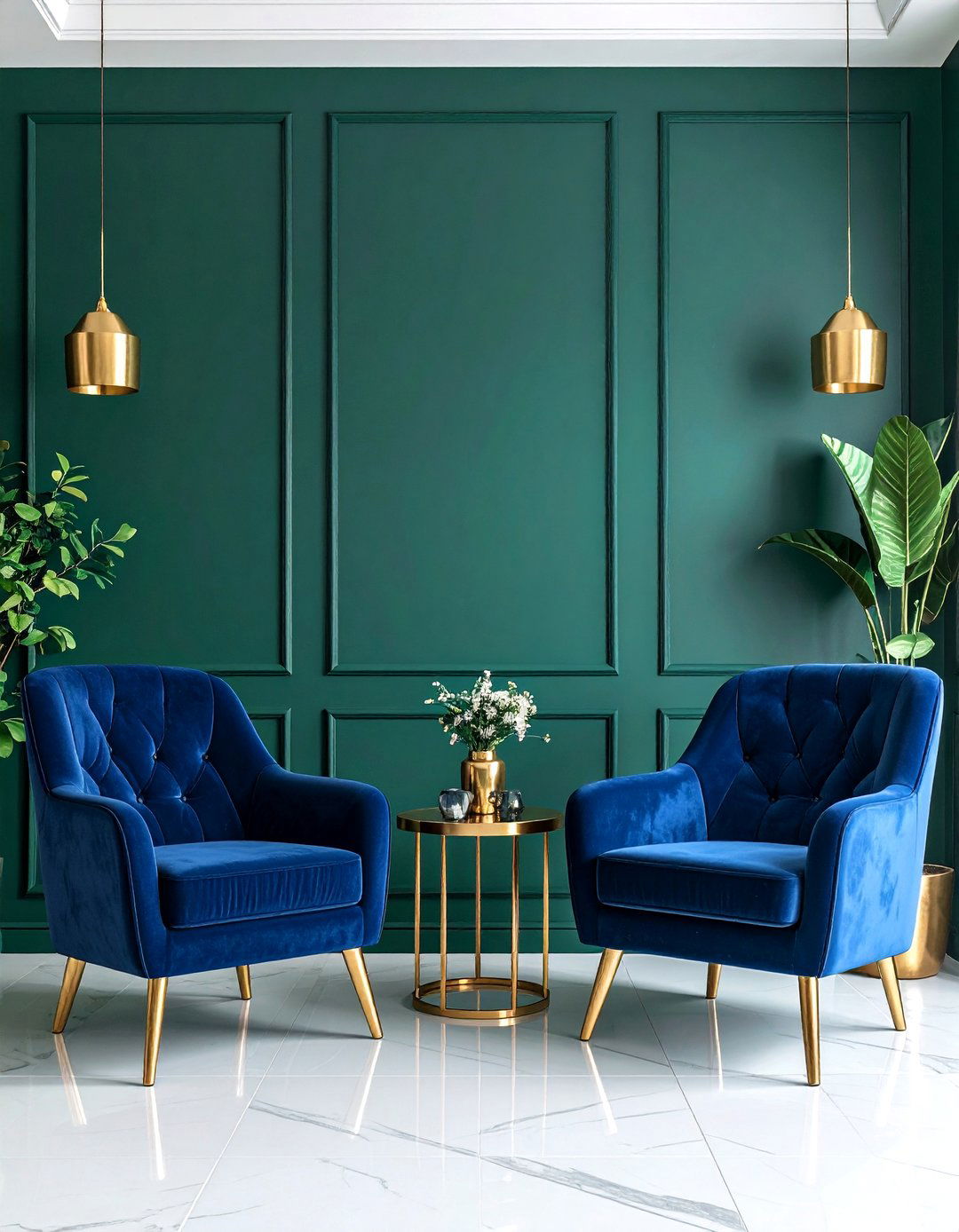
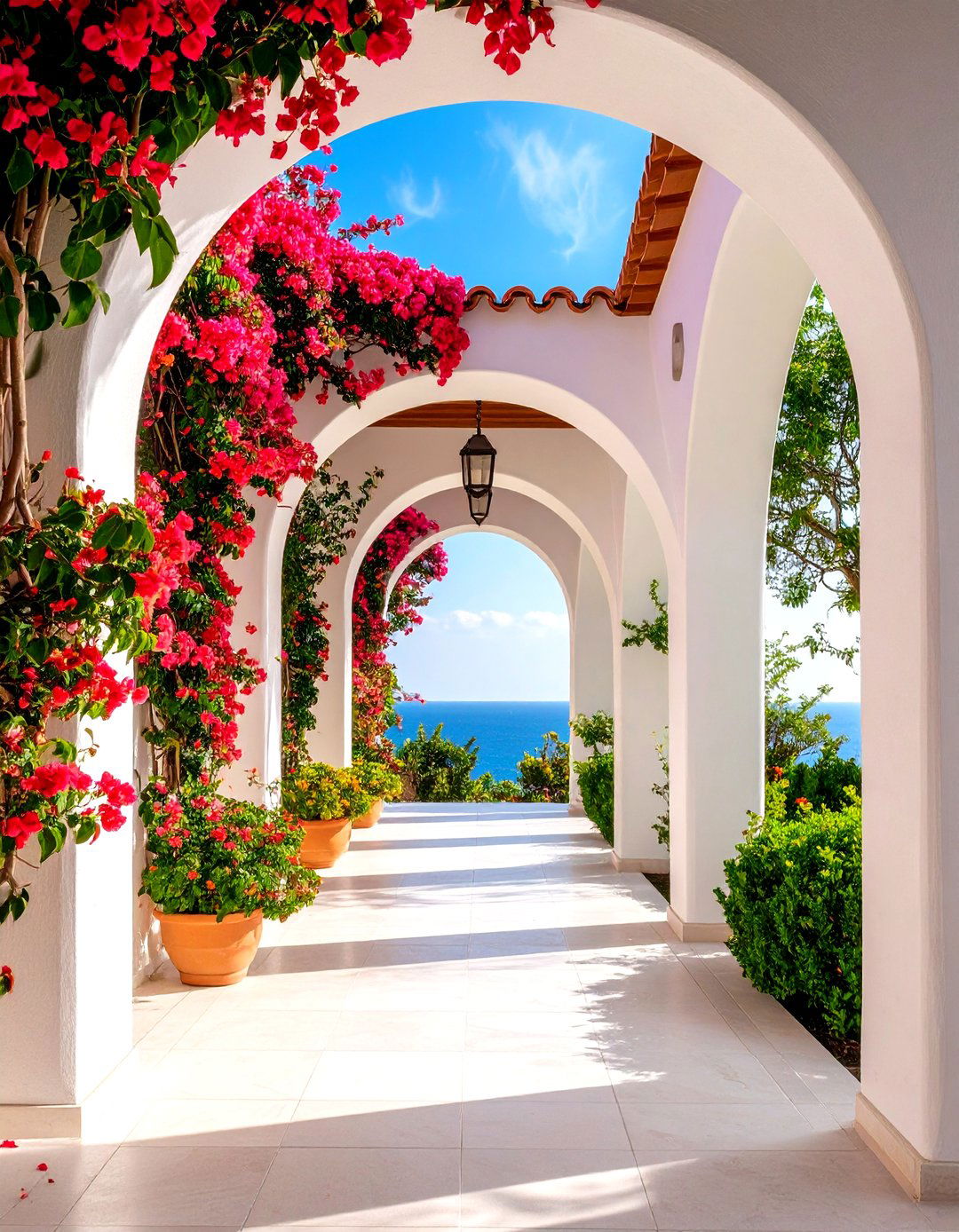
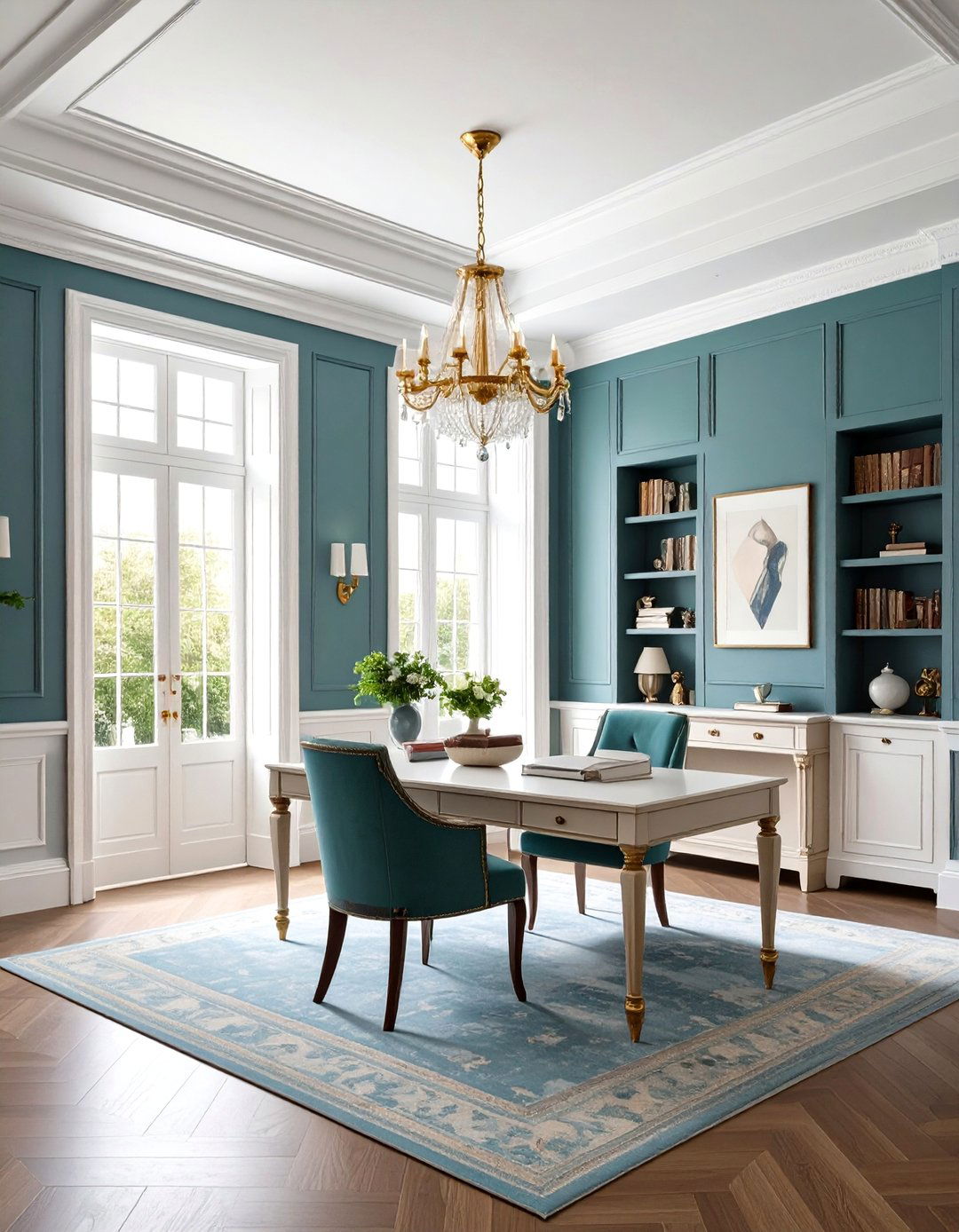
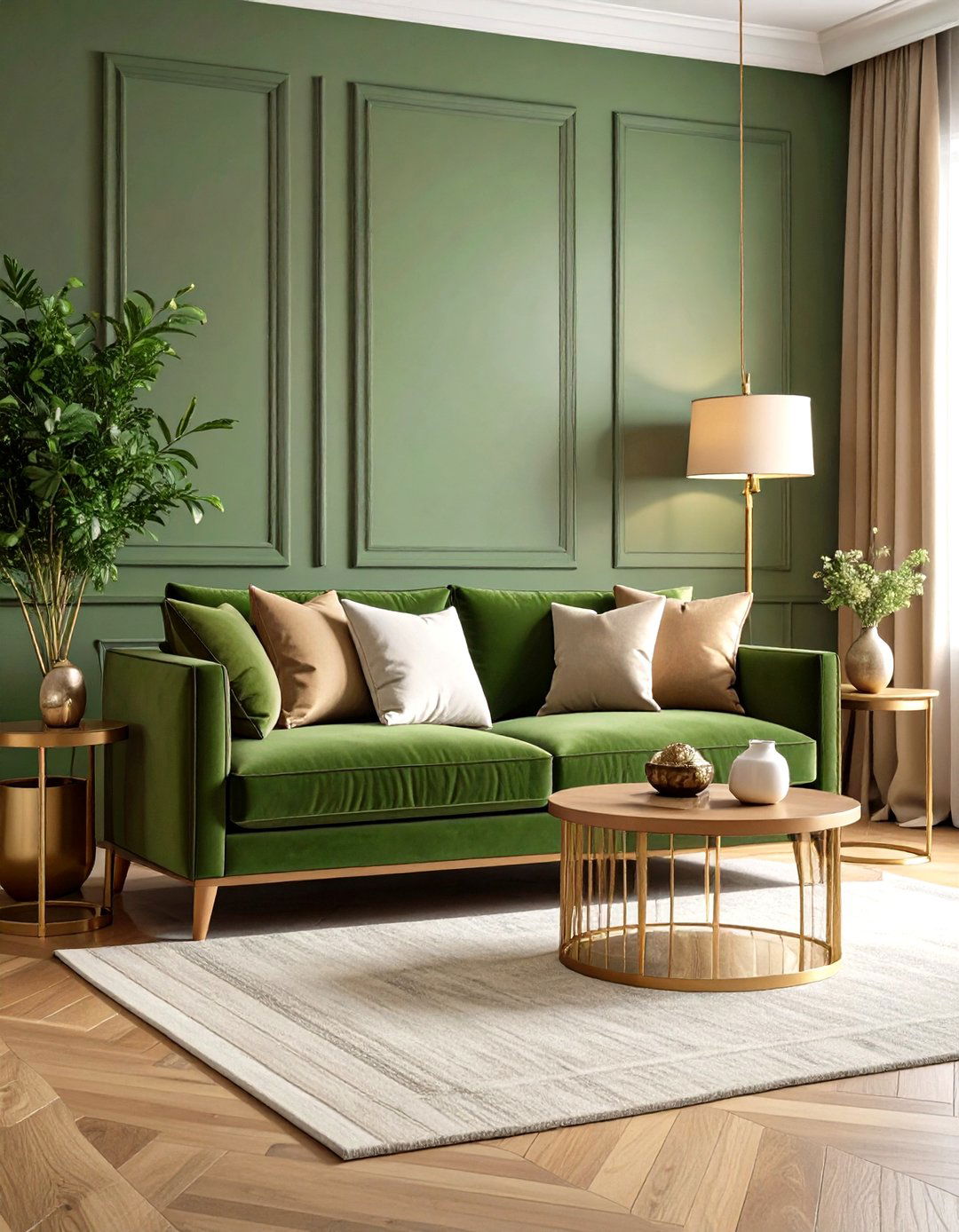
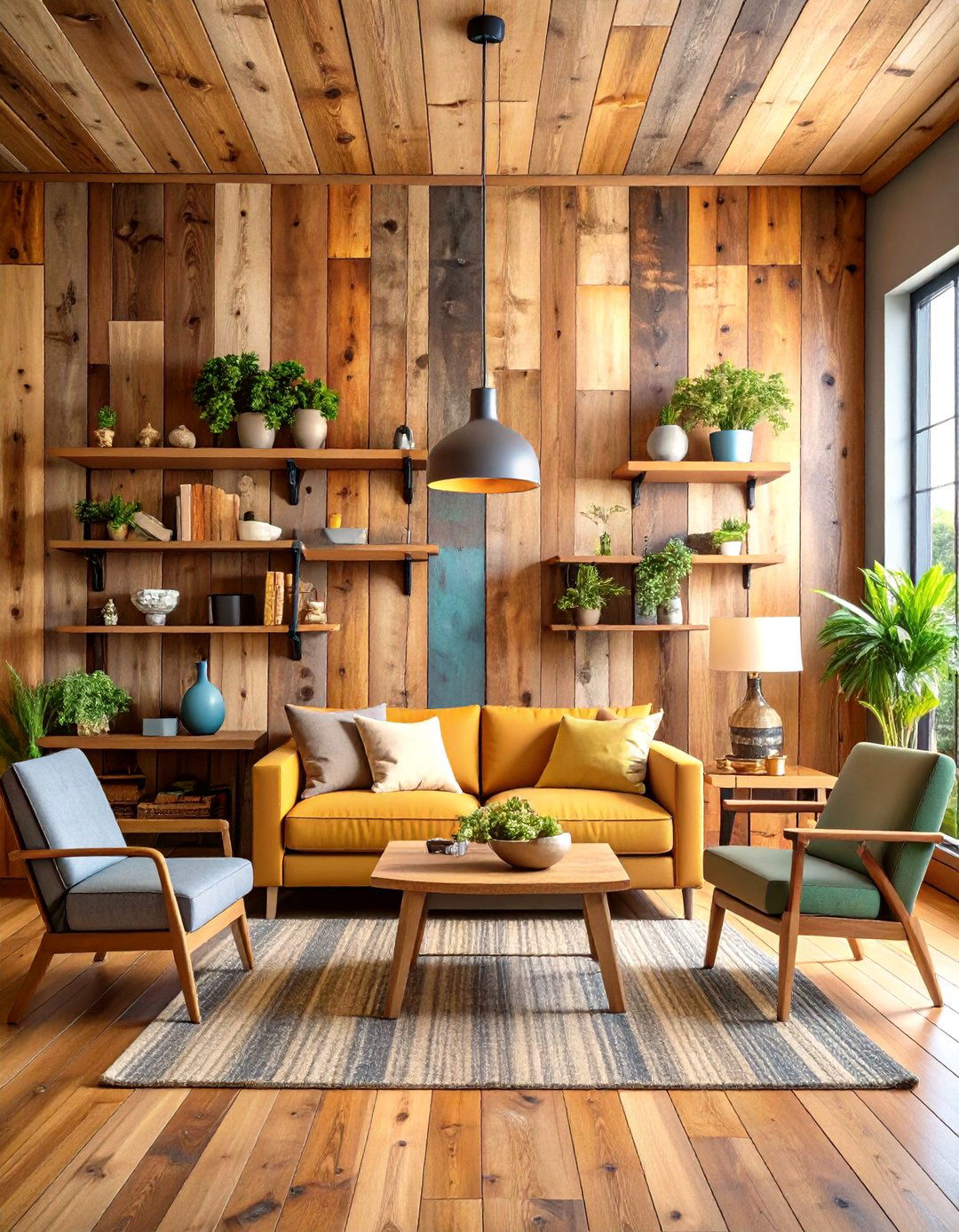
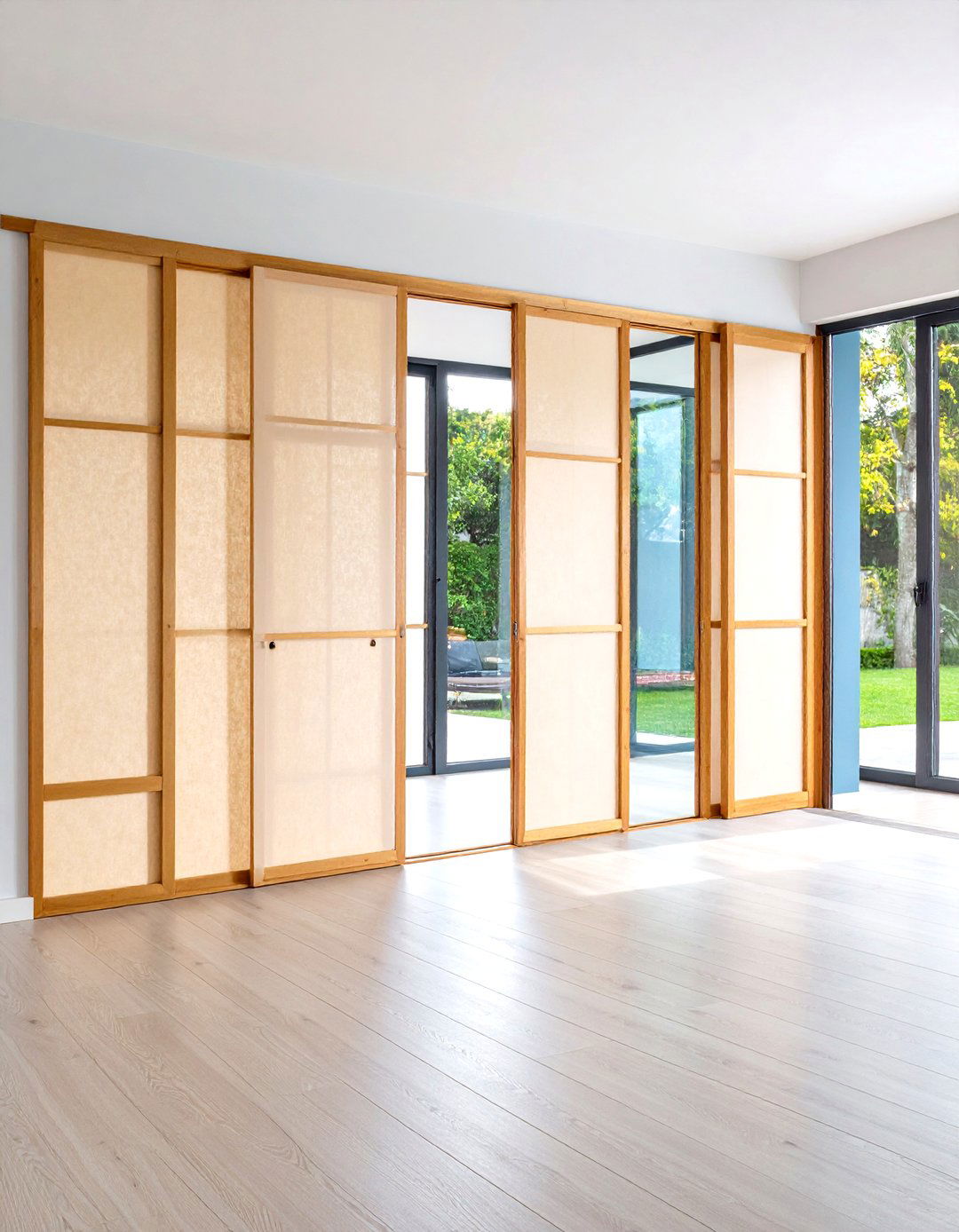
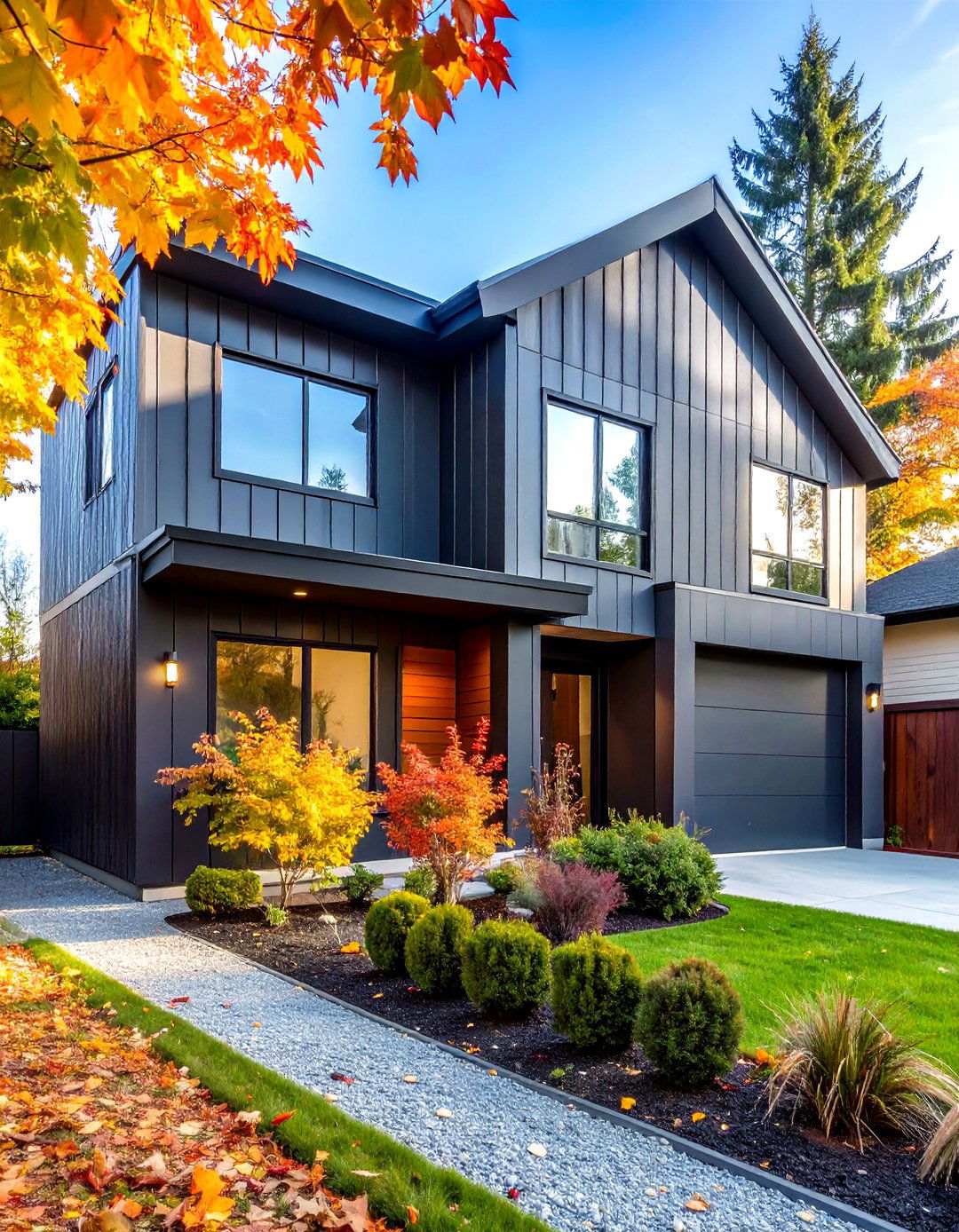
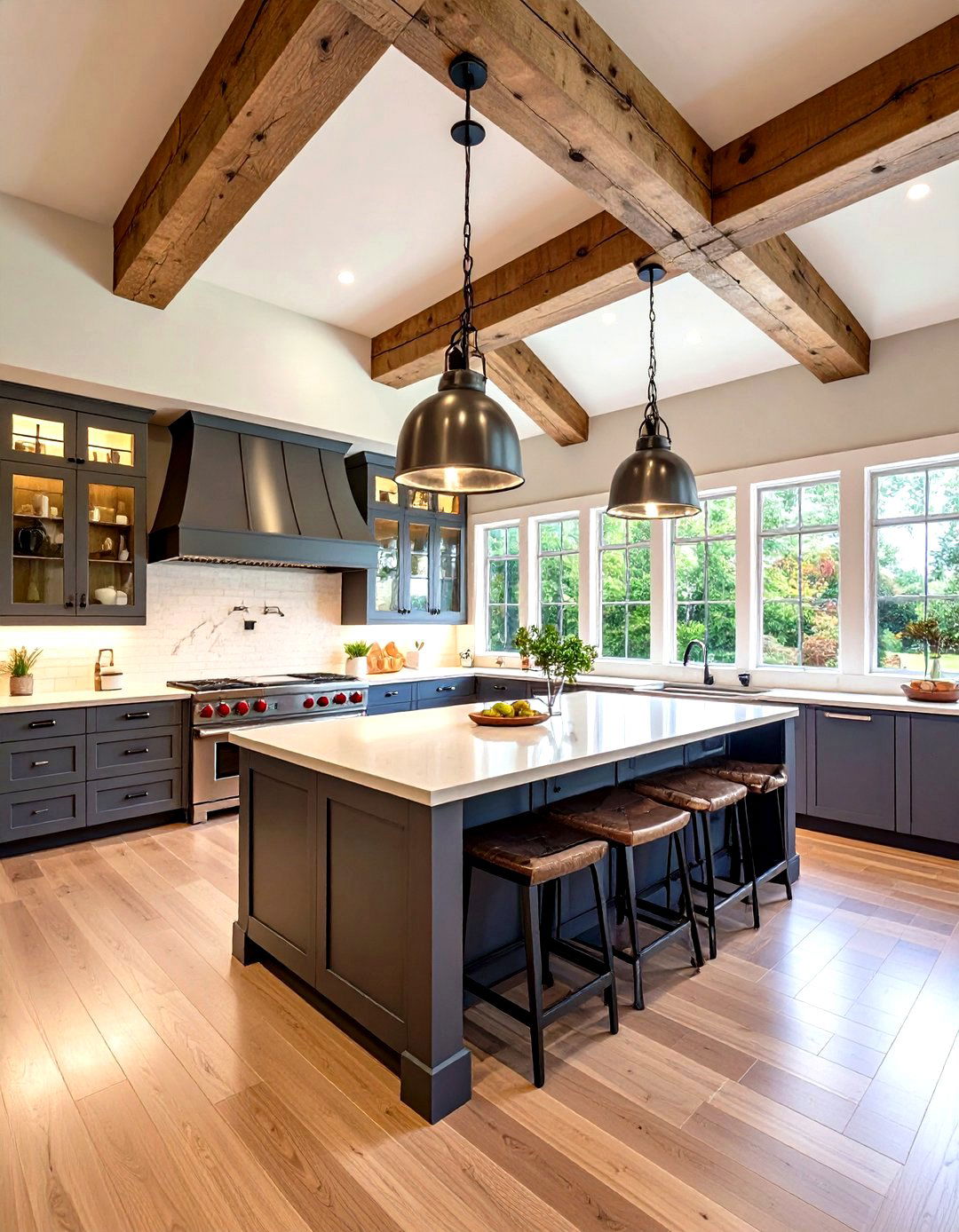

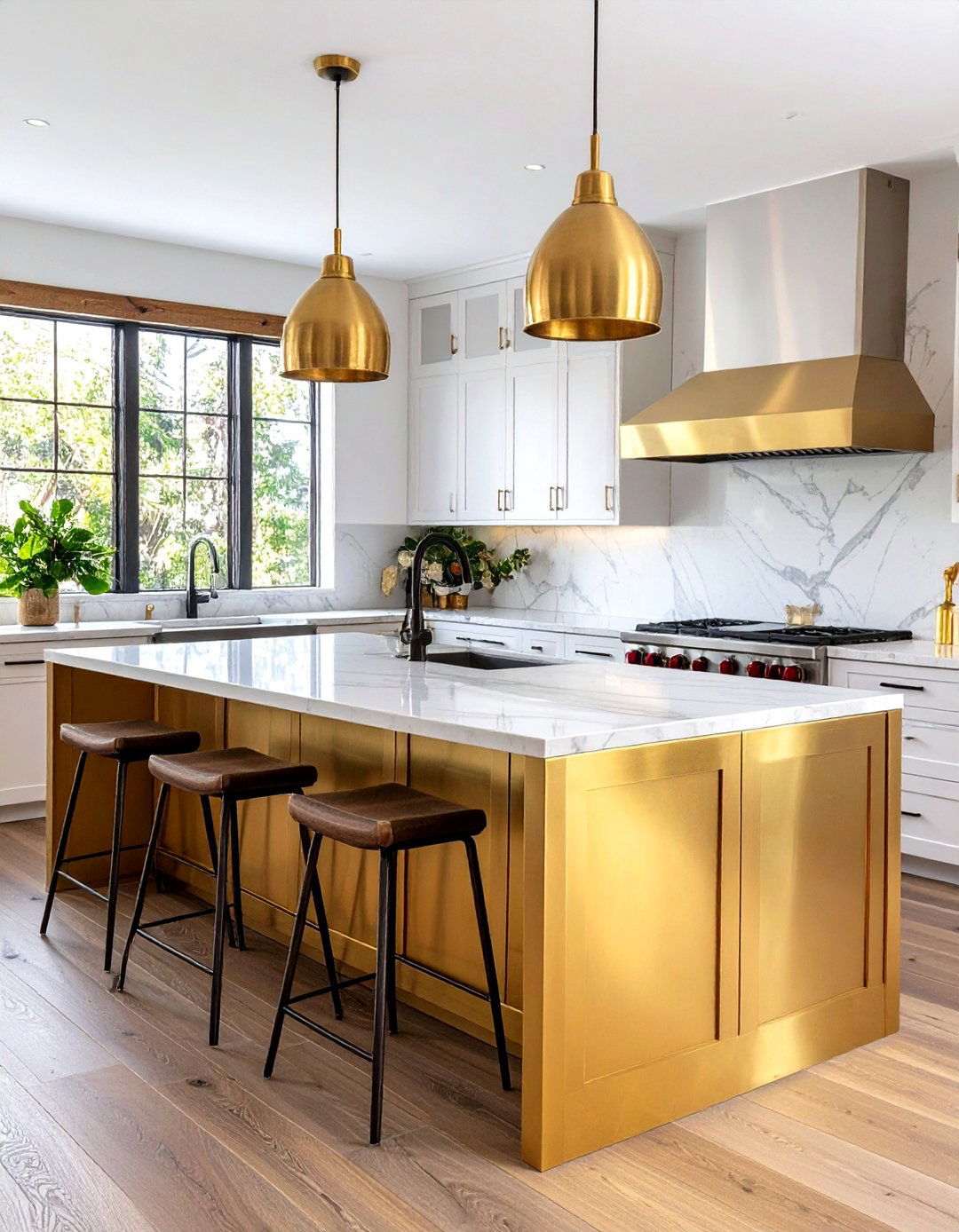
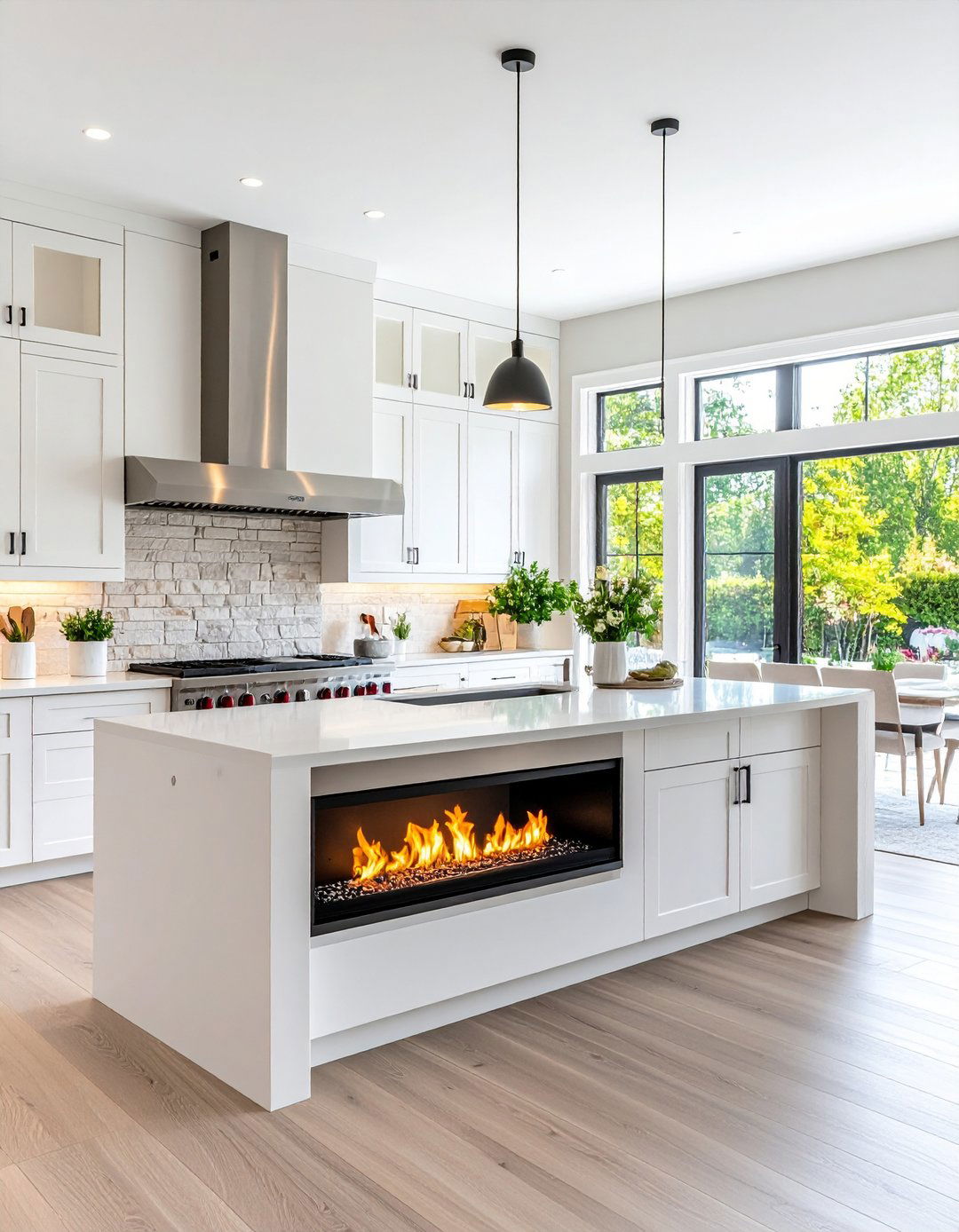
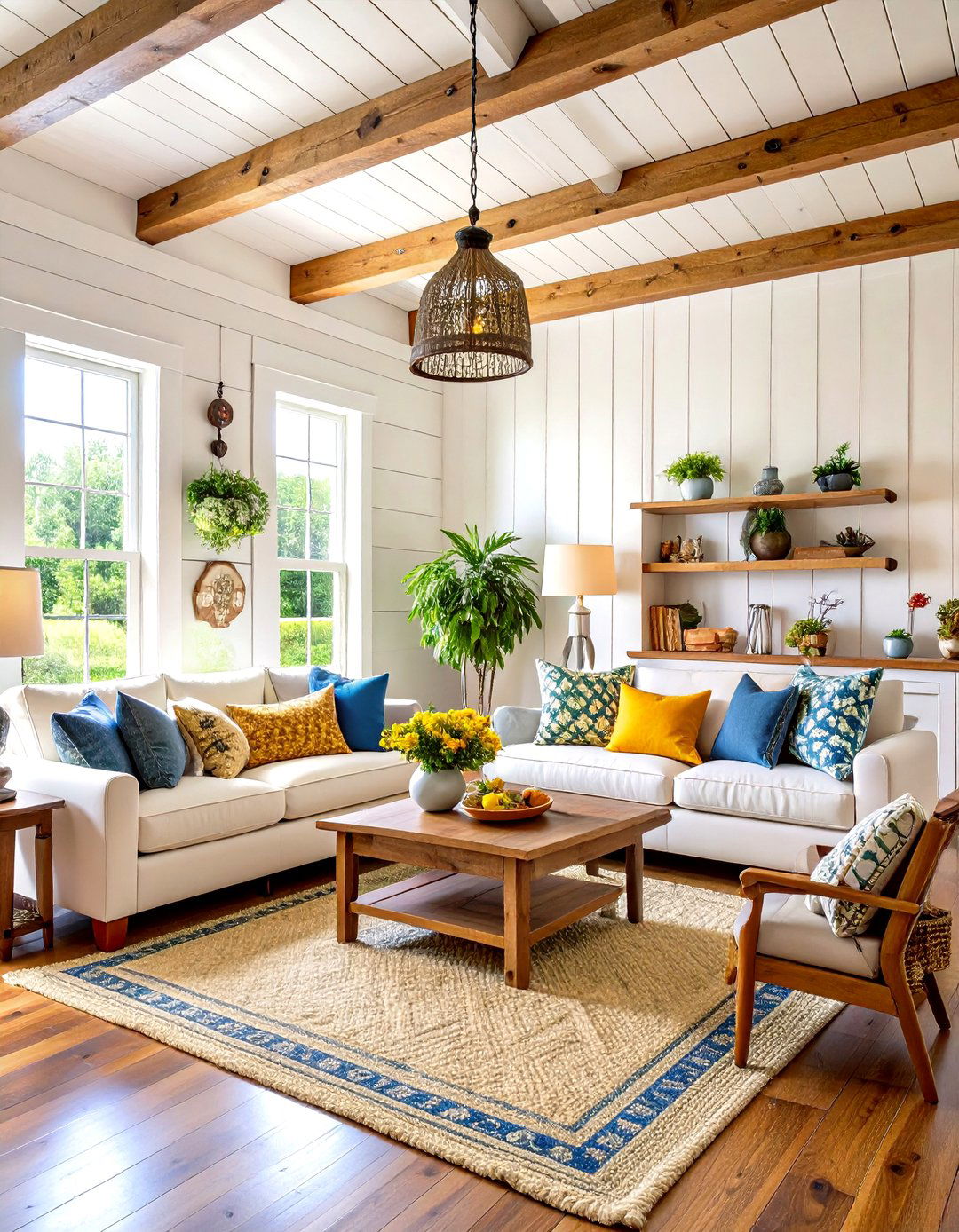
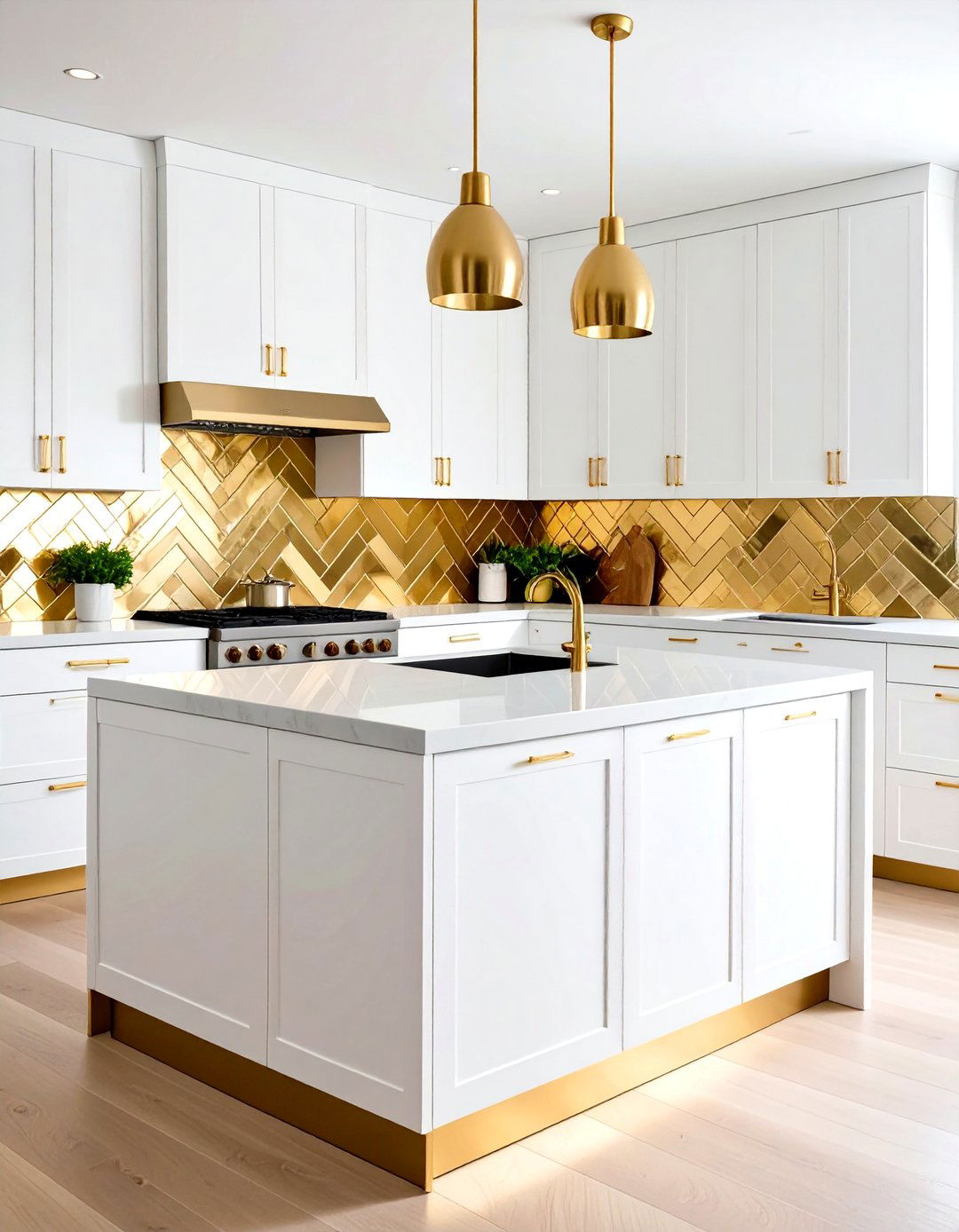


Leave a Reply